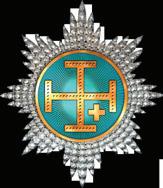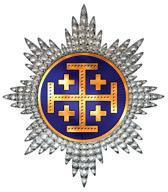








Sir Knight David J. Kussman, GCT
Grand Master
of the Grand Encampment of Knights Templar
To the Sir Knights of the Grand Encampment of Knights Templar Greetings in the name of our Lord, Jesus Christ!

The theme for the 70th Triennium is “Aspire to Inspire.” To aspire is to rise up to a great plan, an abundant hope of fulfilling a worthwhile mission. To inspire is to convey a feeling of joining a higher cause, influencing soulful action.
My beloved Sir Knights, welcome to the beginning of the 70th Triennium of the Grand Encampment Knights Templar, USA.
I want to begin this message with a huge thank you to all who attended the 69th Triennial held in Salt Lake City, Utah. We enjoyed a tremendous attendance, and our guests were graciously served by a wonderful hotel staff. My profound thanks to my Triennial Committee, especially; Sir Knight Dean Rein and his Lady Edie, Sir Knight T.J. Robertson and his Lady Jennifer, and Sir Knight Thomas Derby and his Lady Lynda. My special thanks to my Lady Kim for her superb efforts in ensuring our guests were shown the hospitality for which our Order is long noted.
The theme for the 70th Triennium is “Aspire to Inspire.”
To aspire is to rise up to a great plan, an abundant hope of fulfilling a worthwhile mission. To inspire is to convey a feeling of joining a higher cause, influencing soulful action. Simply defined, aspire is an individual effort while inspire brings others into the mix. How do they impact the way we lead?
Some of the changes being introduced to accomplish our mission include a realignment of three of our departments to better serve our York Rite partners. Specifically, the Northeast, Mid-Atlantic and Southeast departments now are in alignment with the General Grand Chapter and the General Grand Council for better coordination and use of resources.
The Preserving Templary Committee is revised and will concentrate on assisting commanderies with problem solving. Teams will be deployed upon request to assist with issues such as ritual, finance, membership, drill teams, etc
Our website is under new management and, as you can imagine, will be a work in progress. Our new managers have been working around the clock to update the image and content to better serve our membership. My thanks to our team of Sir Knights for all your efforts on our behalf. My very special note of appreciation to a true hero within our Templar
family goes to Sir Knight Dan Pushee, KGC. For almost twenty years Sir Knight Dan has created and maintained our website, along with numerous others, and assisted in ensuring our membership was kept informed as our Order evolved. Your dedication to our mission is very much appreciated and acknowledged.
Sir Knights, our mission remains the same. Our challenges also remain. With your continued support and prayers, we will continue to learn from our mistakes, build upon our successes, and Aspire to Inspire the next generation to join our faithful Band of Brothers.
Our journey continues…

David J. Kussman, GCT Grand Master

Grand Encampment of Knights Templar of the United States of America

David
J. Kussman Grand Master
David
Studley Grand Captain General & Publisher
ADDRESS CHANGE OR CHANGE IN MEMBERSHIP
Please report all changes in membership to the Grand Recorder:
Lawrence E. Tucker
Grand Recorder
Grand Encampment Office
3 Sugar Creek Center Blvd Ste 410 Sugar Land, TX 77478
Phone: (713) 349-8700
Fax: (713) 349-8710
E-mail: larry@gektusa.org
Magazine and correspondence to the editor should be sent in electronic form to the managing editor whose contact information is shown below. All photos or images should be property of the author, or used with permission or under license by the author, unless expressly noted otherwise.
Ben Williams Managing Editor
Laughing Lion 1100 W Littleton Blvd Ste 440 Littleton, CO 80120
Phone: (720) 328-5343
Fax: (720) 328-5297
E-mail: ben@knightstemplar.org
visit our website at:




Sir Knight Paul Erickson, GCT Grand Prelate of the Grand Encampment of Knights Templar
"Therefore, encourage one another and build one another up, just as you also are doing."
1 Thessalonians 5:11

One of my favorite things about Freemasonry is the fellowship we share with one another. Nothing is better than resting in good company.
True, it’s always great to hear good ritual, and I do love good ritual. Ritual is what draws us together. But I feel fellowship is what keeps us there and, more importantly, it’s what brings us back.
Please keep in mind Proverbs 27:17, “As iron sharpens iron, So one person sharpens another.”
Who better to put your trust or confide in than your Lodge or Commandery brother? And if we should misstep, and push the boundaries of civility, can’t we accept gentle and loving criticism from that same brother?
One thing I especially enjoy are the times I’m asked to pray for, and/or with you all.
You should also know that the 40 Mile Project is still alive and well, albeit somewhat underutilized. Please don’t ever think that asking for prayer, or asking for someone to be contacted, is an imposition. It isn’t, far from it. For me, it is a joy to be able to serve in that way. If ever we are together at a Masonic event, feel free to tap me on the shoulder; all you have to do is ask.
Blessings to you all, Paul
Paul Erickson, GCT Grand Prelate


This issue of the Knight Templar is a tad late due to the Triennial Conclave, which ran into the third week of August. We wanted to bring you coverage of this Conclave because decisions made by the Grand Encampment in Conclave assembled affect us all. See an account of the Triennial on pages 10 to 21. Congratulations are due to our Grand Master on his reelection for another Triennium, to his Grand Officers, and to Sir Knight Jim Magee, who was elected Grand Captain General, and Sir Knight David Studley, who was elected Grand Treasurer. There were some important amendments adopted by the assembly, so be sure to review them. (Yes, the rumors are true, there is now a Grand Encampment tartan! Although this tartan is adopted by the Grand Encampment, word on the street is there are no current plans to alter the current uniform requirements. So this is really just a kilt you can wear anywhere other than commandery, to show off your affiliation with the Knights Templar.)
Also in this issue, Sir Knight Chris Ruli highlights an unusual occurrence in the nineteenth century (at least, unusual from a modern perspective) – a Templar baptism at George Washington’s tomb. Ruli points out that this evidences a pride of place Templary held in those days, as well as the high – almost religious – esteem

Sir Knights held in venerating Washington. Worthy aspirations, perhaps, for the modern Templar.
I offer you some history in this issue as well – an account of the Holy Sepulcher, perhaps the most holy site in Christendom. The Holy Sepulcher (also called the Church of the Resurrection) is important to Knights Templar – not only as the veritable place of the skull (Golgotha), but also because it was here in 1119 (most probably) that the Knights Templar originally formed from a band of Crusaders who, perhaps ruing their belligerence in “liberating” the Holy Land, had laid down the sword and taken up monastic vows of poverty and contemplation. (That would not last long, as Jerusalem became increasingly susceptible to raids of warring tribes and so the “warrior monk” was born.) Learn more about this fascinating edifice on page 24.
If you were present at the Grand Encampment Triennial, then you would have heard Sir Knight David Dryer, Past Department Commander, give a rousing speech on membership, leadership, and ritual. We reproduce that speech (edited for the written word) as Words to Live By, on page 39. The points Dryer makes are applicable to every Knight Templar and every Commandery. Read them. There is a code of conduct which should mark every Templar. Dryer lays it down. We also feature an essay
from Sir Knight Ike Baker, author of A Formless Fire. Baker was a participant in the Templar Ritualist program and his essay for the Order of Malta was selected for publication. In it, Baker treats of the story of Saint Paul and his shipwreck on the island of Malta and provides instructive interpretation of the symbolism of this account. Read more on page 43.
The Grand Commandery of Virginia awarded a $90,000 KTEF starter grant to researchers at the University of Virginia School of Medicine earlier this year. The Knights Templar Eye Foundation continues to be the most important and effective funder of emergent research in pediatric ophthalmology and care. In serving as a trustee for the Foundation, I have come to better understand the impact we have in this space: a lot of the most distinguished eye doctors today had their careers started by the Knights Templar Eye Foundation.
The impact of your donations, Sir Knights, cannot be overstated.
Sir Knight Delamater, who conceived of the Foundation in 1956, would be proud. His vision (forgive the pun) to cure childhood blindness once and for all is rapidly becoming a reality. The exponential curve of discovery has skyrocketed well beyond the biology I learnt twenty years ago. The capabilities we now evince are staggering. Truly, the Anthropocene (the era where humankind
influences the world more than any other force) has begun. But it is perhaps better marked by humankind’s newfound ability to rework itself rather than our overall impact on the environment (which is also terrifying). To paraphrase Elon Musk, the future is going to be weird.
The 57th Voluntary campaign for the Eye Foundation has kicked off with the 60th Triennium. Meet your new Campaign Chairman, Richard Jernigan, on page 46. See the results of the 57th Voluntary Campaign (which raised over $8 million) on pages 50 and 51.
My hat is off to Sir Knights Joshua Payne and Michael Huff for capturing the Triennial session in hundreds of well-shot images. The photos in this magazine of the Triennial (including the cover shot of our Grand Master) were all taken by them. Understand, it’s not easy taking pictures –you have to sort of move silently through the thick of things without drawing attention and capture the moment. It takes true talent –not just in framing the subject and ensuring good lighting: there’s an aspect of invisibility required. As far as I’m concerned, these gentlemen are superheroes.

Ben Williams



Ike Baker is the Historian at Mt. Hermon Lodge No. 118 in Asheville, NC. He hosts the Arcanvm YouTube channel and podcast. His debut book, A Formless Fire, detailing the history, theory, and practice of the western esoteric traditions was released in July 2024 by Masonic publishers Tria Prima Press. He organized the 2024 Southeastern Masonic Symposium at Asheville Masonic Temple. Ike travels widely across the US and abroad giving educational presentations on Freemasonry, philosophy, and western history. His website is: www.ikebaker.com
Gerald Pugh has been associated with drill for 25 years. He captained state championship teams in Ohio and has received the Ned E. Dull Best Drill Captain Award five times. He is a Past Commander of Marietta Commandery No. 50 and served as Grand Commander of Ohio in 2015. He was the East Central Department Commander from 2018-2021, and was a member of the Grand Encampment Drill Advisory Committee for the 2009-2012 Triennium. He is currently Drill Committee Chairman for Ohio and the Grand Encampment. He proudly serves on the board of the Ohio Masonic Home.
B. Chris Ruli is a historian and author of early American Freemasonry with a focus on the history of Freemasonry in Washington, D.C. He is a member of Columbia Commandery No. 2 and Potomac Commandery No. 3 in the District of Columbia. This article is based on research for Ruli’s upcoming book about the history of District of Columbia Commandery, coming soon.
Ben Williams is a Registered Patent Attorney based out of Denver, Colorado. He’s a Past Department Commander for the Northwest Department and has held many Masonic offices in his home state of Colorado. He’s married to his patient and caring wife, Tiffany, a history teacher. They have a daughter, Adelyn, and a beagle, Warwick.



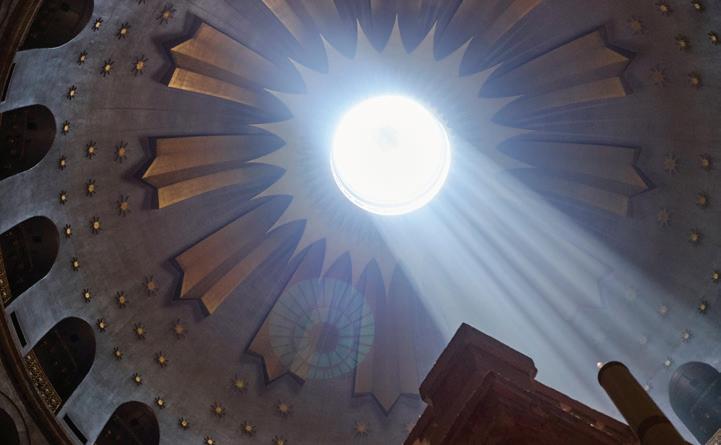
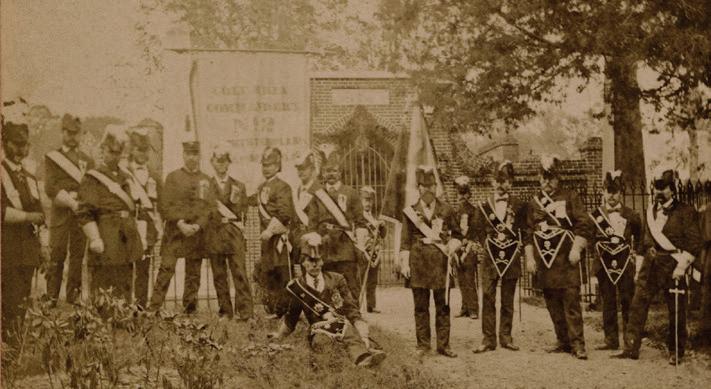



Order of Malta at Fort Worth Commandery No. 19, Fort Worth, TX, June 24, 2024.
BQP Phe fnQP Mf Phe OLiNiP iO UKRe SMy Leace UKJgOrffenijg TiJdJeoo gkkdjeoo faiphfRUJeOO geJPUJeoo oeUfcKJpnKU. AgaiJop oRch phene io JK Uaw
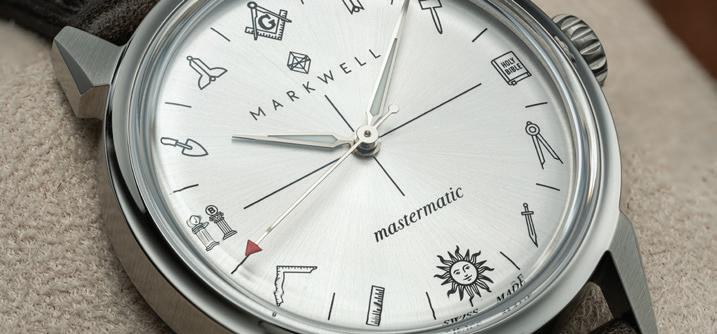
Pains by Boondoggle

"Clearly, not what I meant, Jenkins."

AUGUST 19 & 20, 2024,



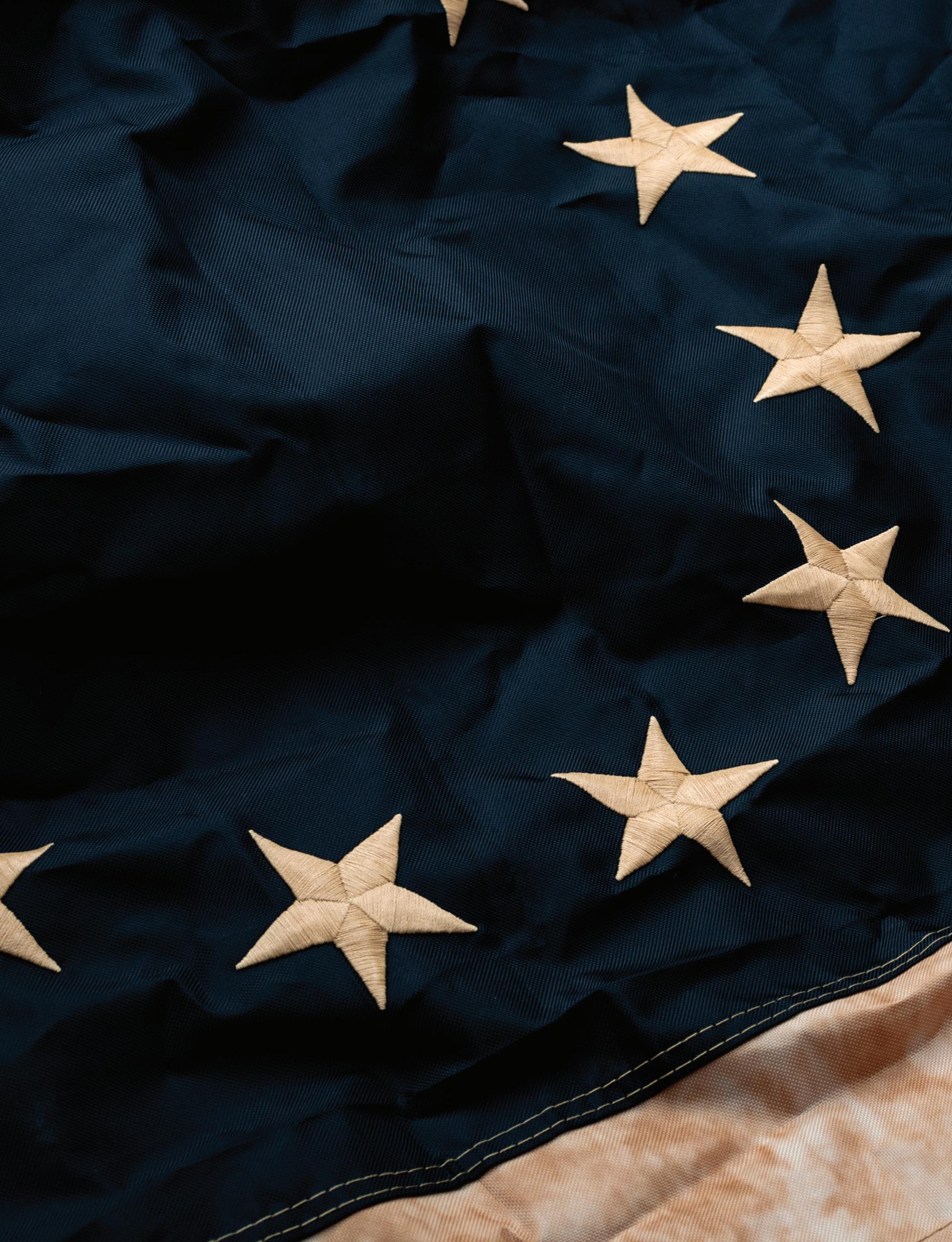







Salt Lake City – Three-hundred seventy-four Knights Templar convened at the Little America Hotel in downtown Salt Lake City, August 19 and 20, 2024, as voting delegates for the 69th Triennial Conclave of the Grand Encampment of Knights Templar of the United States of America.
The Grand Encampment is sovereign over Masonic Templary in the United States, as well as over Grand Commanderies overseas and in Central and South America. It is the largest Templar
jurisdiction in the world. Over five hundred Knights Templar were in attendance; with their ladies, the banquet was plated for over seven hundred.
Members comprise dais officers of the Grand Commanderies within its jurisdiction, as well as Past Grand Commanders. Terms for Grand Encampment officers, both elected and appointed, are three years (each, a Triennium), culminating in a Stated Conclave (a Triennial), whereat the business of the Grand Encampment and
election of its officers is concluded. When seated in assembly, the Grand Encampment is the supreme legislative, judicial, and executive body of the Order, invested with plenary power to perform whatever is necessary to move the body in the interests of Templary, under the majority opinion, always while safeguarding the right of the minority opinion to be heard.
Business was entertained Monday and Tuesday, culminating with the election of officers.
by Ben Williams
Sir Knight David Joseph Kussman was unanimously elected Grand Master. Sir Knight Jeffrey Allen Bolstad was elected Deputy Grand Master. Sir Knight Jack Magee Harper II was elected Grand Generalissimo, and Sir Knight James Magee was elected Grand Captain General. Sir Knight David Studley was elected Grand Treasurer and Sir Knight Larry Eugene Tucker was elected Grand Secretary.
Continued on page 14





Among the business of the Grand Encampment was a number of proposed amendments. Amendments to the ritual and Constitution of the Grand Encampment require a threefourths majority of members present and voting to pass. Amendments to the Statutes require two-thirds. All other actions are disposed of by majority.
Amendment 2024-01, to amend Section 216 of the Statutes to prevent any Grand Commandery from holding an annual Conclave on Easter weekend failed, primarily due to the inclusion of language that would similarly prevent “any Templar work” on the “Thursday, Friday, or Saturday preceding the Grand Encampment Easter Observance.” One Sir Knight attempted to amend the amendment to remove this language but was struck down by the Chair.
Motivation for the amendment came from the Northwest Department, where at least one Grand Commandery’s schedule has fallen on Easter weekend due to the lunar cycle informing the calendaring of Easter. An amendment to the Statutes requires
three-quarters of members present and voting to pass. The amendment failed, probably due to concerns over limiting the ability of Grand or Constituent Commanderies from performing Orders of the Temple, say, on Good Friday, as has been the custom in some jurisdictions hosting local Easter Observances.
Amendment 2024-02 to allow a candidate for the Order of the Temple to witness the opening of a Commandery ahead of his creation as a Knight Templar was adopted, with more than three-quarters of the Knights present voting for the amendment.
While a practice undoubtedly common in some jurisdictions, especially where classes of candidates undertake the Orders, allowing a Knight of Malta to sit in Conclave of the Commandery, even just for the opening, probably violates Norris Decision No. 3 (1937), which holds that the full form opening of a Commandery is part of the secret work and should not be exemplified in the presence of anyone who is not a Knight Templar. Similarly, Wieber Decision No. 22 (1961) and Crofts Decision No. 2 (1970)
hold all parts of the ritual to be secret, including the opening and closing of a Commandery. This amendment, then, was enacted for convenience in allowing a Knight of Malta to remain in Commandery and witness the opening of the Commandery in preparation for his creation as a Knight Templar.
Amendment 2024-03, to assess per capita per physical member, instead of at each membership per Commandery, failed. Presently, dues are assessed at the Grand Commandery level, which contemplates membership under each Commandery, not by each individual person. Thus, plural members pay per capita in each Commandery to which they belong. The proponent’s rationale was essentially that paying double is unfair – there are no benefits paying double dues provide (unlike other Masonic bodies, each Knight Templar is afforded only one vote, regardless of how many Commanderies he belongs to).
The amendment, as altering the Constitution, required three-quarters of members present and voting to pass. The super-majority was unmet, however, due to difficulties in implementing such a change in
the Masonic Membership System (which includes significant integrations with the Eye Foundation) as well as, perhaps, the stark reality that the reduction in per capita under such a scheme would be significantly detrimental to the Grand Encampment. Contemplate how many Commanderies you’re a member of. Presently, do you know any Sir Knight who is not a plural member?
Amendment 2024-04 to amend the short form of the Order of Malta to include a declaration of faith as required in the longform passed with the required three-quarters of members present and voting in favor. The amendment was forwarded because a belief that “the Savior died on the Cross for the remission of sin” is required of all Knights of Malta; omitting the declaration from the short form may have inadvertently obscured sufficient notice to candidates regarding the obligation of their faith. Since the short form of the ritual omitted this declaration, a member could become a Knight Templar without declaring faith in Christ, which could be problem-
Continued on page 16
by Gerry Pugh
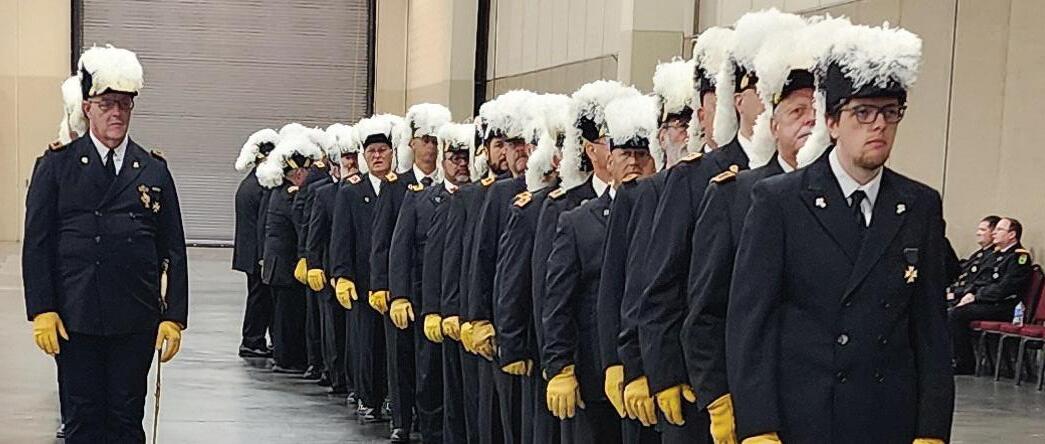
On Saturday, August 17, 2024, at the Mountain America Expo Center, Salt Lake City, Utah, thirteen drill teams consisting of one Class A, three Class B, two Class C, and seven Class D Drill teams participated in Grand Encampment Competitive Drill.
The teams represented Texas, Ohio, Indiana, California, and Virginia.
The Competitive Drills were held on one floor at the Expo Center. There were over seven hours of drill, from 7:00 a.m. Saturday morning until 2:00 p.m. Saturday afternoon. One hundred sixty-nine Sir Knights participated in the competition, of which 101 were drilling for the first time at the Grand Encampment Drills. Our oldest Drill participant was 88 years old.
At 4:30 p.m. Saturday the Passin-Review began. Each team assembled to march past the East under inspection of the Grand Master and the Grand Encampment Officers.
Each Sir Knight competing on a first-place team received an engraved wristwatch. The second and third place teams in each class were presented individual prizes also. All teams received a plaque noting their participation in this competition. KT

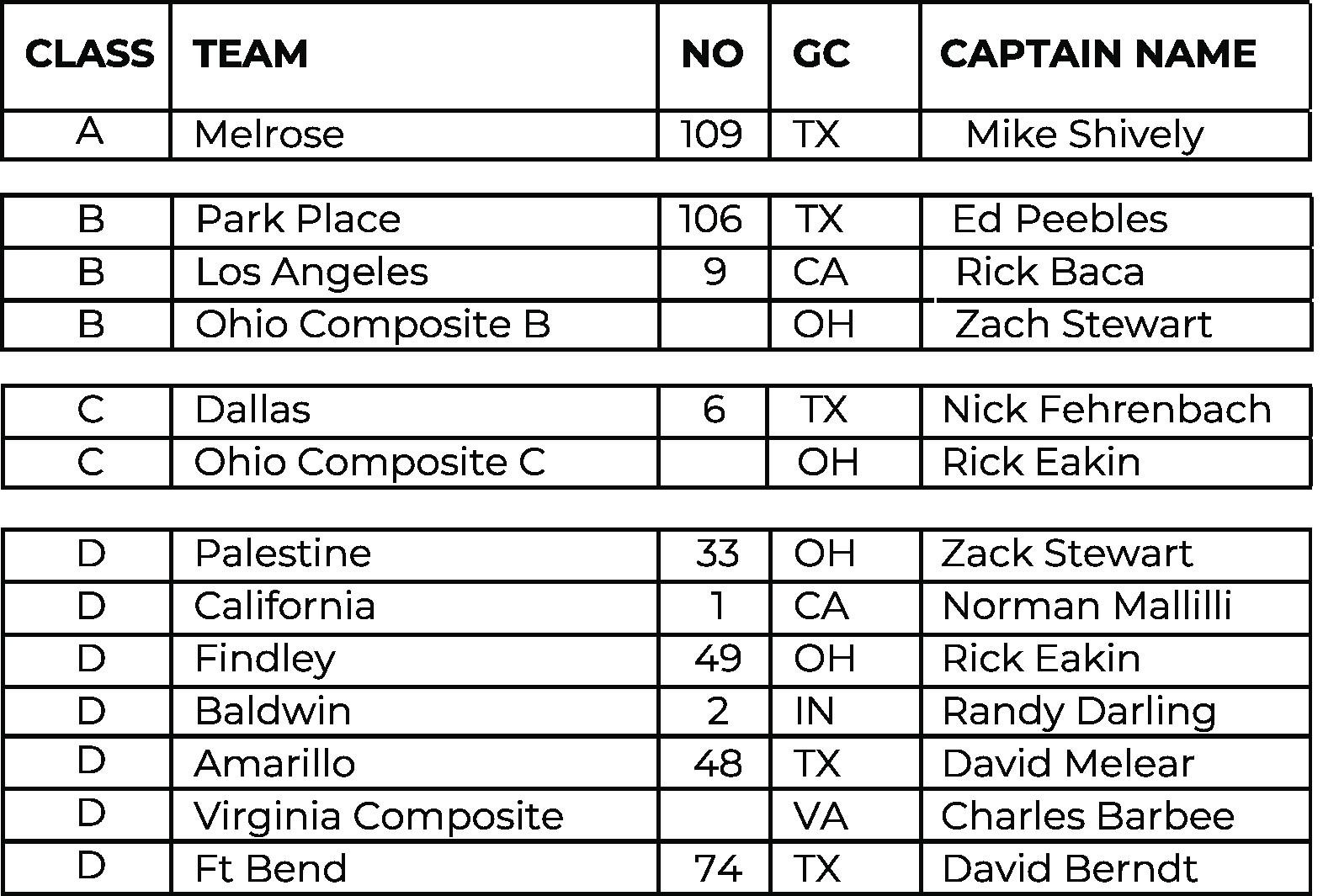
atic for the member and the Order.
A resolution calling for a vote of no confidence in the Grand Encampment officers by the Grand Commandery of Wyoming was submitted to the Committee on Appeals and Grievances since it effectively attempted to appeal (or at least, excoriate) the decision of the Special Conclave, held March 10, 2022, in Fort Wayne, IN, at which 79% of the members present voted to remove then-Grand Master Sir Knight Michael Johnson from office. The committee recommended the complaint be dismissed with prejudice.
The resolution recognized that the Special Conclave was called correctly and opened in due form. However, the resolution argued that the Special Conclave was nonetheless properly closed at the outset by declaration of the then-Grand Master and, therefore, no business could properly be performed. Thus, the resolution argued, no lawful action could be taken by the assembly; therefore, the then-Grand Master’s removal was void.
The resolution was unanimously dismissed by the Sir Knights present and voting. The Grand Encampment in assembly is the supreme legislative, judicial, and executive power, and from its decision there is no appeal. See Constitution, § 3. Further, business at a Special Conclave includes the business “set out in the request” when at least nine Grand Commanderies adopt the call, and this business should, by definition, be heard:
The Conclaves of the Grand Encampment are: . . . (b) Special; which may be called by the Grand Master at his discretion[;] and on the written request of at least nine Grand Commanderies, the Grand Master shall call such Conclave.
No business shall be transacted at such Conclave save that specified by the Grand Master in his summons or set out in the request.
On the written request of at least nine Grand Commanderies, then, the Grand Master shall call the Special Conclave. Where a sufficient number of Grand Commanderies adopt the call, the call is mandatory (the Grand Master shall call it). The call is not permissive: if the Grand Master could summarily dispose of a Special Conclave at his whim, there would be no meaningful distinction between Special Conclaves called by the Grand Master or Special Conclaves called by the Grand Commanderies. The safeguard against frivolous calls is the requirement for at least nine Grand Commanderies to adopt the call (a high bar). For nine or more Grand Commanderies to adopt a Special Conclave, the business must merit consideration.
No business shall be transacted at the Special Conclave, except the business set out in the request. This ensures no additional business can be transacted, otherwise the relevancy of the proceeding could be subjected to abuse.
Where nine or more Grand Commanderies submit a request for a Special Conclave, the membership is properly noticed of that business, and only that business is effectively adopted for consideration by the assembly. Note that in 2022, sixteen Grand Commanderies adopted the call, specifically for the purposes of reviewing the decisions of the then-Grand Master as well as contemplating his removal from office.
Once convened and adopted, an agenda for consideration by the assembly cannot be summarily


Top: Voting delegates ready for the social hour; Middle: Officers of the Grand Encampment no longer ride two knights to one horse; Bottom: Sir Knight David Kussman and his lady, Kim, make their entrance at the banquet




dismissed by the Grand Master, particularly where that business concerns the Grand Master’s own decisions, acts and omissions. Allowing any member to preside over proceedings convened to investigate his own conduct would be unnatural and subject the proceedings to injustice and abuse. Further, even if the Grand Master did hold these powers (which would remove any representative capacity completely, rendering the entire process essentially irrelevant), Section 7 of the Constitution states unequivocally that at any Conclave, “Any member
may appeal from a decision of the presiding Officer.”
Thus, were the Grand Master somehow able to declare the Special Conclave closed without considering any item of business adopted by at least nine Grand Commanderies, any Sir Knight present could nonetheless appeal the decision from the floor. Unequivocally, then, the Grand Master cannot cease a Special Conclave at his whim.
The resolution was unanimously dismissed by the Sir Knights present and voting, with prejudice.
The Jurisprudence Committee approved all the Grand Master’s decisions, except one, which, Jurisprudence observed, required ratification by the membership.
Where a director of an organization acts in the interest of the organization but without approval of the membership (or board of directors), if the act does not violate the business judgement rule (that is, the actions of a reasonably prudent director in like circumstances), legally the act can be ratified by the membership after the fact. Here, the Grand Master’s decision to publish the magazine quarterly was approved unanimously by the membership present and voting at the 69th Triennial Conclave.
This is important because the Grand Master does not have power to unilaterally override a standing resolution of the membership. The issue arose because it was believed that in 1967 a standing resolution was passed that the Knight Templar become a monthly publication. However, in preparing this article, and reviewing the Proceedings, it turns out that the resolution adopted in 1967 was not to move to a monthly cycle, but to mail the magazine to all members
(instead of subscribers only), in large part due to the complexity of maintaining subscriber lists and mailing renewals:
“It has become evident that the time has come for Templars, the most militant of Masons, to take a forward step by sending the Magazine to every Knight Templar in good standing . . . . A resolution has been proposed to carry out this purpose, to send the Magazine to every Knight Templar in good standing. I know of no other acceptable alternative and I am glad to lend my hearty support to that Resolution.” Grand Master, Wilber M. Brucker, Proceedings of the 50th Triennial Conclave (1967), 61-62.
In fact, the magazine’s monthly cycle appears to have been decided previously, in September of 1961, by unanimous decision of the Grand Master and his officers at a planning session, not by a resolution of the membership:
“Important changes of policy for the Knight Templar Magazine were adopted with the unanimous opinions of the Grand Officers and Committee members present at the planning Conference held in September, 1961. All Grand
Continued on page 19


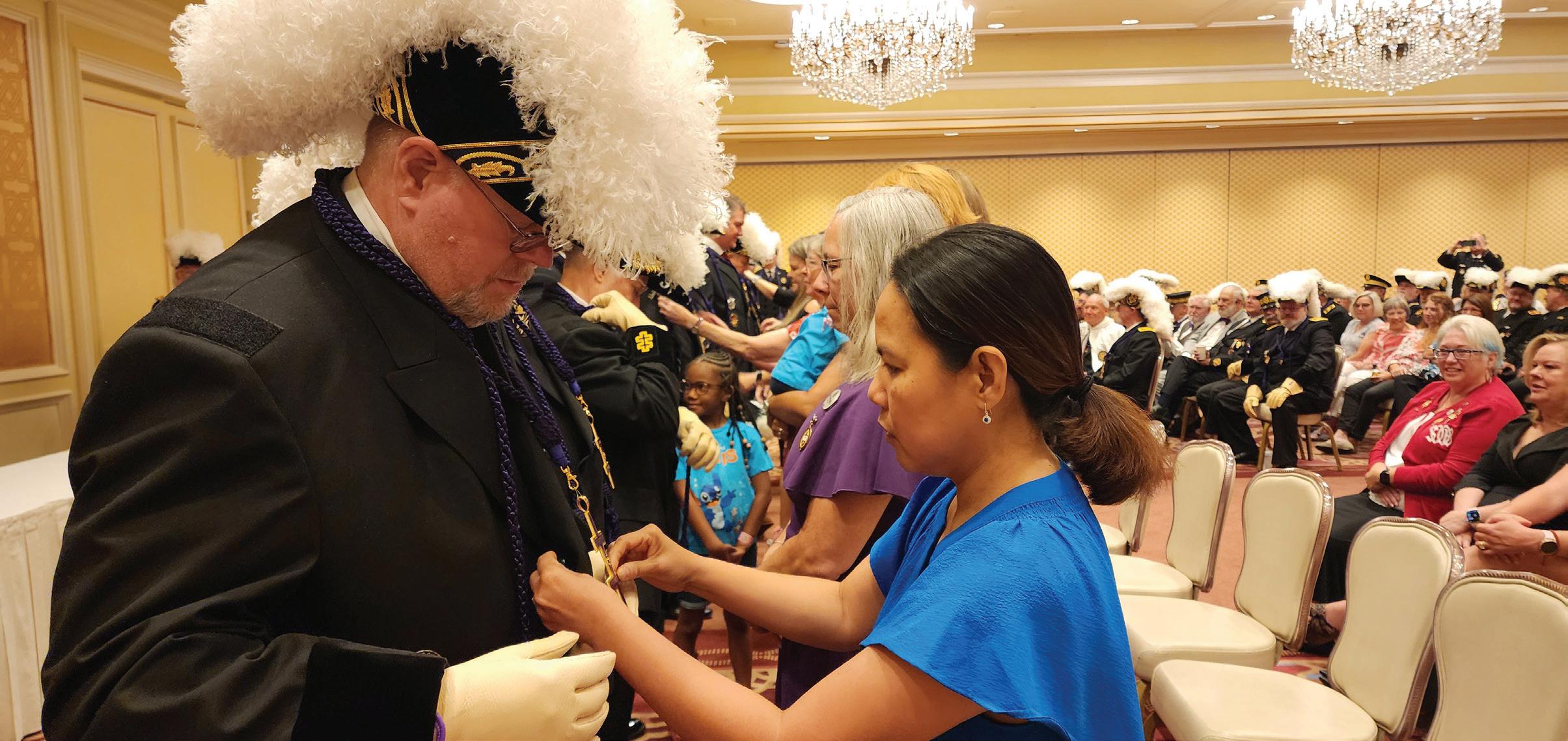
Left, top: Demolay boys demonstrate the Ceremony of Light. Middle: Over 400 Sir Knights and guests attended the banquet. Bottom: Department commanders for the 70th Triennium are invested with the jewels of their office. Bottom right: Sir Knight David Kussman takes his obligation to lead in the best interests of Templary during his installation as Grand Master, while Sir Knights David Goodwin and Jeff Nelson, Past Grand Masters, confer and witness the obligation.
Officers were in agreement that monthly publication was necessary to better internal lines of communication which are vital to good relations between Grand Encampment, Grand Commanderies, Constituent and Subordinate Commanderies.” Report of Paul Miller Moore, Grand Master. Proceedings of the 49th Triennial Conclave (1964), 76. “Beginning with the November 1961 issue, the Knight Templar magazine was published monthly at a subscription rate of $1.00 per year,” he said. Id.
At the outset of the 49th Triennial, Grand Master Moore informed the Sir Knights that the
decision had already been made. “Contacts must be more frequent and more effective. To achieve the first of these requirements, it has been decided to publish the magazine monthly.” Id., 35.
Thus, precedent for changing the publication’s cycle by executive order exists. In the present case, a survey was sent to all members – from which it was determined that the quarterly cycle was not opposed by most members.
Nonetheless, Grand Master agency in management of the magazine appears inherent in its adoption and management. The origin of the Knight Templar is evidenced as far back as 1943, at
the 42nd Triennial Conclave held in Chicago. At that proceeding, Sir Knight Adrian Hamersly, Grand Recorder of the Grand Encampment, noted the desire to “find a plan by which current news of Templar interest might be published and disseminated throughout our membership.”
Proceedings of the 42nd Triennial Conclave (1943), 57.
“It has occurred to me,” Sir Knight Hamersly said, “that such news bulletins might, with greatly increased advantages, be consolidated with the official Review of the respective Grand Commanderies, to be printed (or mimeographed in bulletin form) when
Continued on page 20


Above: The Honor Guard readies for recognition of visiting dignitaries. Right: 1. The Grand Master thanks the Department Commanders for a job well done. 2. Lady Kim receives recognition from the General Grand Chapter as a Grand Duchess of York. 3. Sir Knight Robert Glenn, Grand Master of the Grand Encampment Prince Hall Affiliate is received with honors. 4. Dr. Lee receives the National Award for years of service in pediatric eye care. 5. The Grand Master receives a gift from the Sir Knights of Prince Hall. 6. The Grand receives a gift from the Great Priory of Greece. 7. Sir Knight Sid Leluan is made an honorary Past Grand Master of Brazil. 8. Sir Knight Andreas Spyropoulos, Grand Master of the Great Priory of Greece. 9. Sir Knight Jeff Bolstad pins a Companion of the Templar award on Lady Alicia. 10. Sir Knight Jay Kennedy receives his shoulder boards as East Central Department Commander from his daughter. 11. The Grand Commander of Togo ready for reception. 12. A trusty Companion ready to serve. 13. The delegates for the 69th Triennial Conclave.
and as the Grand Commanderies have held their annual conclaves, rather than to continue the present book Review with its unavoidable delays . . . . It is probable that some sort of arrangement for publication at stated periods throughout the year of the Reviews and incorporating articles of interest by students of Templary and the current news, could be worked out as a substitute for, and without the involvement of a considerable additional expense over, the present Review.” Id.
“I would recommend that the incoming Grand Master be authorized to consider such a program with authority to approve if in his judgment it is considered advisable and advantageous,” he said. Id. Authority for the magazine’s approval by the Grand Master is expressed in the original recommendation for creating the magazine.
Then, on September 27, 1944, Grand Master Charles N. Orr, “Held conference with Sir Knights William I. Sharp, P.G.M., Andrew D. Agnew, P.G.M., Harry G. Pollard, P.G.M., Adrian Hamersly, Grand Recorder; Louis H. Wieber, Grand Warder; Chester B. Emerson, Grand Prelate; Paul M. Moore, Grand Captain of the Guard; Oliver D. Everhard, Official Reviewer; and Chalmers L. Pancoast, P.G.C., at which plans were completed for issuing ‘The Grand Encampment Review.’” Evidently, the form and schedule of the magazine was adopted by the Grand Master at a planning session. The first issue was published in November 1944, with approximately 3,500 copies distributed.
The Review appears to have been authorized later by the members at the following Triennial, in adoption of the budget.
See, e.g., Proceedings of the 43rd Triennial Conclave (1947), 541-545.
Interestingly, The Review was renamed the Knight Templar sometime after the 45th Triennial, on motion by Sir Knight DeLamater (founder of the Eye Foundation), who moved “that we continue the publication, that we change the format to a smaller size, and change the name to Knight Templar.” This motion was tabled, however, on motion by Sir Knight Colton of Minnesota, “until such time as the Grand Encampment may have decided on the amendment establishing a committee on Public Relations.”
Regardless, the Sir Knights at the 69th Triennial unanimously ratified the action. However, for context of the decision, which affects these pages, the above history is nonetheless important and, perhaps, of interest.
Charters were approved by the assembly for Serbian Commandery No. 1 (a subordinate commandery in Croatia) and York Grand Commandery of Knights Templar of Mexico, a second Grand Commandery in Mexico.
A charter for a Grand Commandery in Paraguay was declined until such time that a requisite working and regularity of Templary is continuously established (perhaps by the 70th Triennial).
Continued on page 23




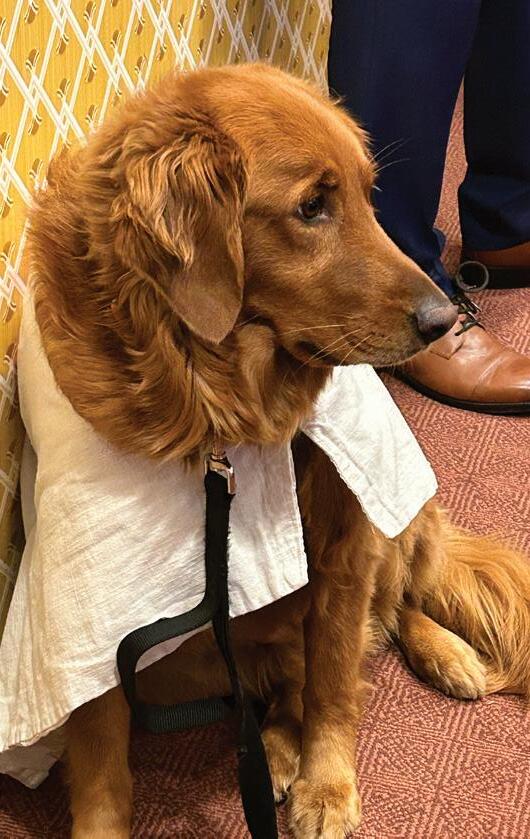



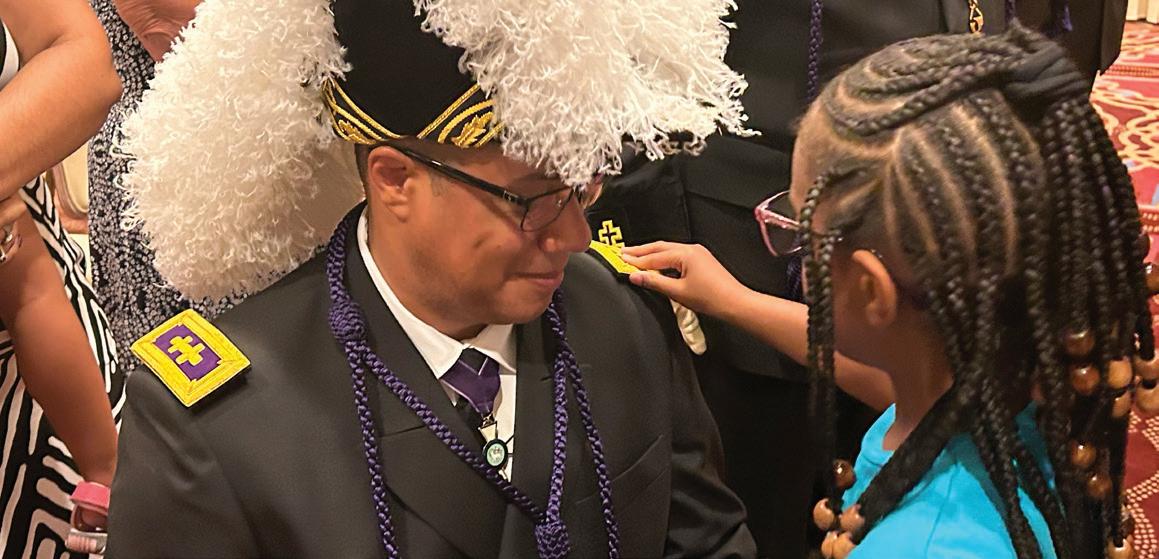






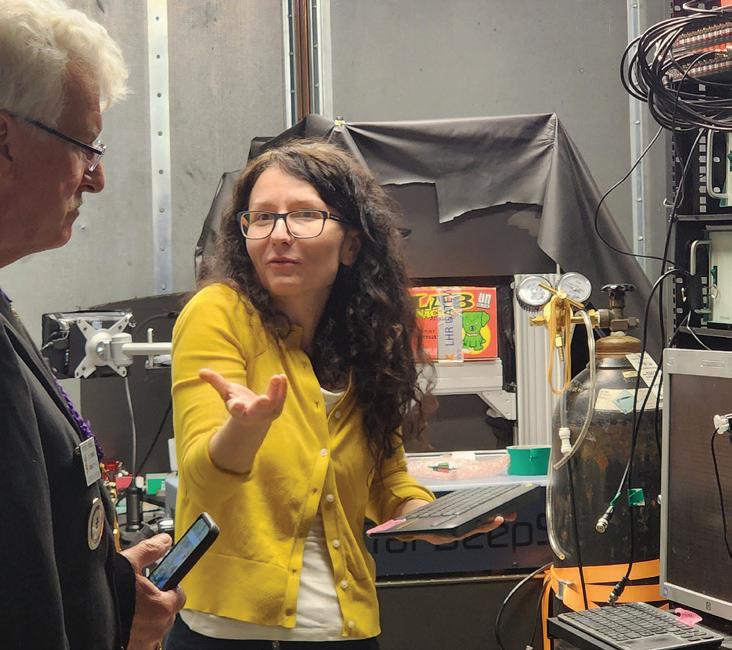
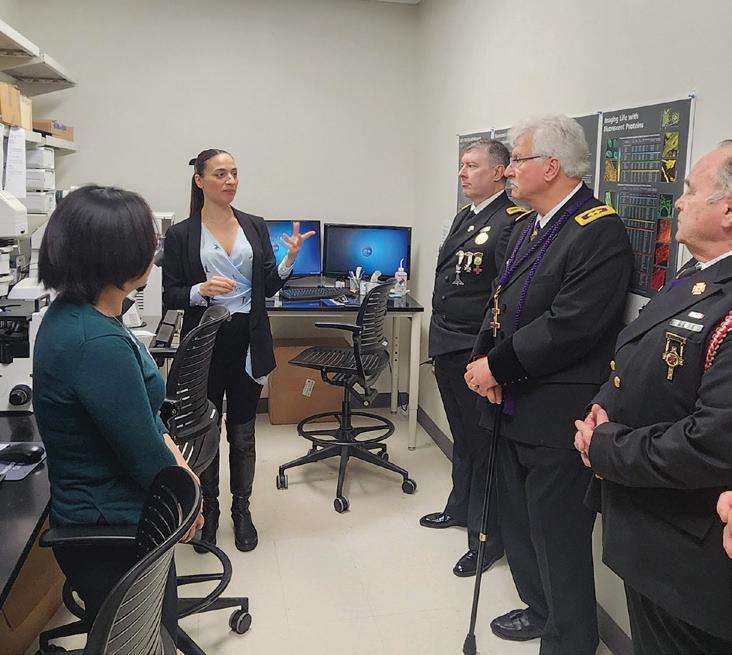
CHARLOTTESVILLE, VA – Representatives from the Grand Commandery of Virginia visited the University of Virginia School of Medicine on February 23, 2024, to present Dr. Marta Grannonico a $90,000 career-starter grant on behalf of the Knights Templar Eye Foundation (KTEF).
Dr. Grannonico, a postdoctoral fellow, was awarded the grant in recognition of her ongoing work in establishing in-vivo biomarkers for retinal developmental damage in aniridia, a condition where the iris partially or completely absent.
During the visit, Dr. Grannonico explained that aniridia is a developmental eye disorder which occurs in 1 in 75,000 newborns with no gender predilection. Although a complete or partial absence of the iris is the most obvious clinical feature of aniridia, visual defects are mainly caused by retinal damages, including foveal hypoplasia, optic nerve hypoplasia, and progressive development of glaucoma.
Timely initiation of treatment can prevent ongoing neural damage and preserve long-term vision.
Detecting the disease at its earliest stages and monitoring disease progression present
substantial clinical challenges. About 90% of aniridia cases are related to mutations in a specific gene (the PAX6 gene), which plays a critical role in the early development of the eyes and the brain. Dr. Grannonico plans on developing a sensitive and accurate biomarker for monitoring the developmental neural damage significant of the disease by applying a non-invasive technology that detects backscattered light to form high-resolution, three-dimensional images of living retinas, a technology known as visible-light optical coherence tomography fibergraphy. Small-eye mice that express the PAX6 gene can model aniridia disease, since they share the same mutation found in most aniridia patients’ DNA. Testing the technology on PAX6 small-eye mice, which mimic aniridia pediatric eye disease, makes sense.
By the end of this project, she will have new in vivo biomarkers for the developmental damage in the retina, which will profoundly impact broader pediatric ophthalmology. The findings of this research can be translated to human studies by using the same technology platform.
The delegation of Grand Officers from the Grand Commandery of Virginia was led by the

by Joshua Payne

Grand Commander, Right Eminent Dennis Haas, who was joined by Right Eminent James Steele, the Mid-Atlantic Department Commander of the Grand Encampment of Knights Templar. Dr. Grannonico and her laboratory leader, Dr. Xiaorong Liu, provided a tour of the laboratories in the School of Medicine primarily involved in diagnosing and preventing degenerative eye disorders. The delegation also heard presentations from other researchers in Dr. Liu’s laboratory who are performing critical work in this area.
The Knights Templar Eye Foundation supports research grants that can help launch the careers of clinical and basic researchers focused on the prevention and cure of potentially blinding diseases in infants and children. Dr. Grannonico’s career-starter grant is one of twenty-five funded by the Knights Templar Eye Foundation to researchers in universities and research institutes across the United States in 2023-2024. It is the first one in more than twenty years awarded to a researcher in Virginia.
The Knights Templar Eye Foundation fulfills its mission through contributions both from Sir Knights and the general public: donations to the Knights Templar Eye foundation may be made through their website at KTEF. org. KT

The Knights Templar Eye Foundation board of trustees met for its annual meeting on Thursday, August 15, and Friday, August 16, ahead of the Triennial. Dr. Michael Stewart, Professor and Chairman Emeritus of Ophthalmology at the Mayo Clinic, and Knights Templar Eye Foundation Professor of Ophthalmology Research, presented an overview of research funded by an endowment from the Eye Foundation, detailing among other items drug efficacy and half-lives in emerging treatments for the eye.
Financially, the Foundation had a good year, growing its assets by more than $27 million, despite expenditures. The audit report was laudatory – the Foundation is well managed, highly transparent, and the books are kept up to date and frequently reconciled throughout the year.
“As far as transparency and cooperation . . . I would say, at least from my client base, the Eye Foundation is the gold standard for how a firm should prepare for an audit,” said Andrew Moore, of Haynie & Associates. He commended the Foundation’s transparency, attention to detail, and monthly reconciling of books.
The Foundation’s investments are handled by three institutions, Bank of America, City National Rochdale, and Stifel. Representatives from each institution were on hand to brief the board on the portfolios under their management, each of which accorded with the investment policies adopted by the board. The board also reviewed budget to actual expenses and adopted the budget for the ensuing fiscal year. Among other issues, some discussion was had regarding use of the Consumer Price Index (CPI) versus Personal Consumption Expenditures (PCE) as the gauge of inflation against which to maintain the permanent fund. An overview and discussion of the Masonic Membership Solutions was also had, a major proportion of which is integrated with the Knights Templar Eye Foundation for managing and tracking donations.
The Board of Trustees voted to award $6.7 million in funding, including a new research endowment at Boston Children’s Hospital Department of Ophthalmology, administered in conjunction with faculty at the Harvard Medical School. The endowment will support emergent science at the cutting edge of discovery and invention.
Funding was continued for Children’s Hospital Los Angeles groundbreaking research into gene therapy to cure blindness caused by rare mutations in DNA that express various diseases in children.
Additionally, funds were recommitted to a program aimed at preventing infant blindness in Sub-Saharan Africa, purchasing vital equipment and training on-the-ground personnel to reach underserved communities where, too often, preventable disease proliferates.
The membership of the Knights Templar Eye Foundation, a 501(c)(3) nonprofit organization, is comprised of all voting delegates registered to attend the Triennial Conclave of the Grand Encampment.
Trustees of the Knights Templar Eye Foundation are the officers of the Grand Encampment, all living Past Grand Masters, plus six trustees at large elected by the members.
Election of at least two trustees at large occurs at each Triennial (trustee terms are nine years long). Typically, the Grand Encampment is put at recess and a meeting of the Eye Foundation is then called to order.
In the session at the 69th Triennial, Sir Knight David Dryer was re-elected to the board for a second term and Sir Knight Jeremy Vaughan was elected.
The National Award is given by the Grand Encampment once every three years to a person (not necessarily a Knight Templar) who has made an outstanding contribution to our country through civic, professional, military, scientific, or religious endeavors.
Dr. Tom Lee was selected as the recipient this triennium for his contributions to the field of pediatric ophthalmology as Director of the Vision Center at Children’s Hospital, Los Angeles.
The Grand Prelate and Assistant Grand Prelates of the Grand Encampment, Sir Knights Terry Plemons, Paul Erickson, and Robert Elsner respectively, were each awarded the highest award the Grand Encampment can bestow: the Knight Grand Cross. These Sir Knights have worked tirelessly under this most important office in our Order to bring comfort and succor to our members. KT

“Now in the place where he was crucified there was a garden; and in the garden a new sepulchre, wherein was never man yet laid. There laid they Jesus therefore because of the Jews’ preparation day; for the sepulchre was nigh at hand.”
John 19: 41-42 (KJV).
Why the keys to Christendom’s most holy church have been in custody of Muslims for more than 800 years
by Ben Williams


Adeeb Joudeh wakes up before the adhan sounds from the minarets, hours before dawn.
In the Old City of Jerusalem, the mornings liven. On Sundays, voices of muezzin blend with the clamor of bells – Catholic bells, Orthodox bells, bells that tolled through the centuries, new bells and old, bells to frighten away demons, bells that summon the faithful to remembrance.
This morning, it’s still silent as he walks the Via Delarosa. Stray cats dart in the shadows, skittering across the cobblestones. The first half-light before dawn tints the eastern sky, up there,
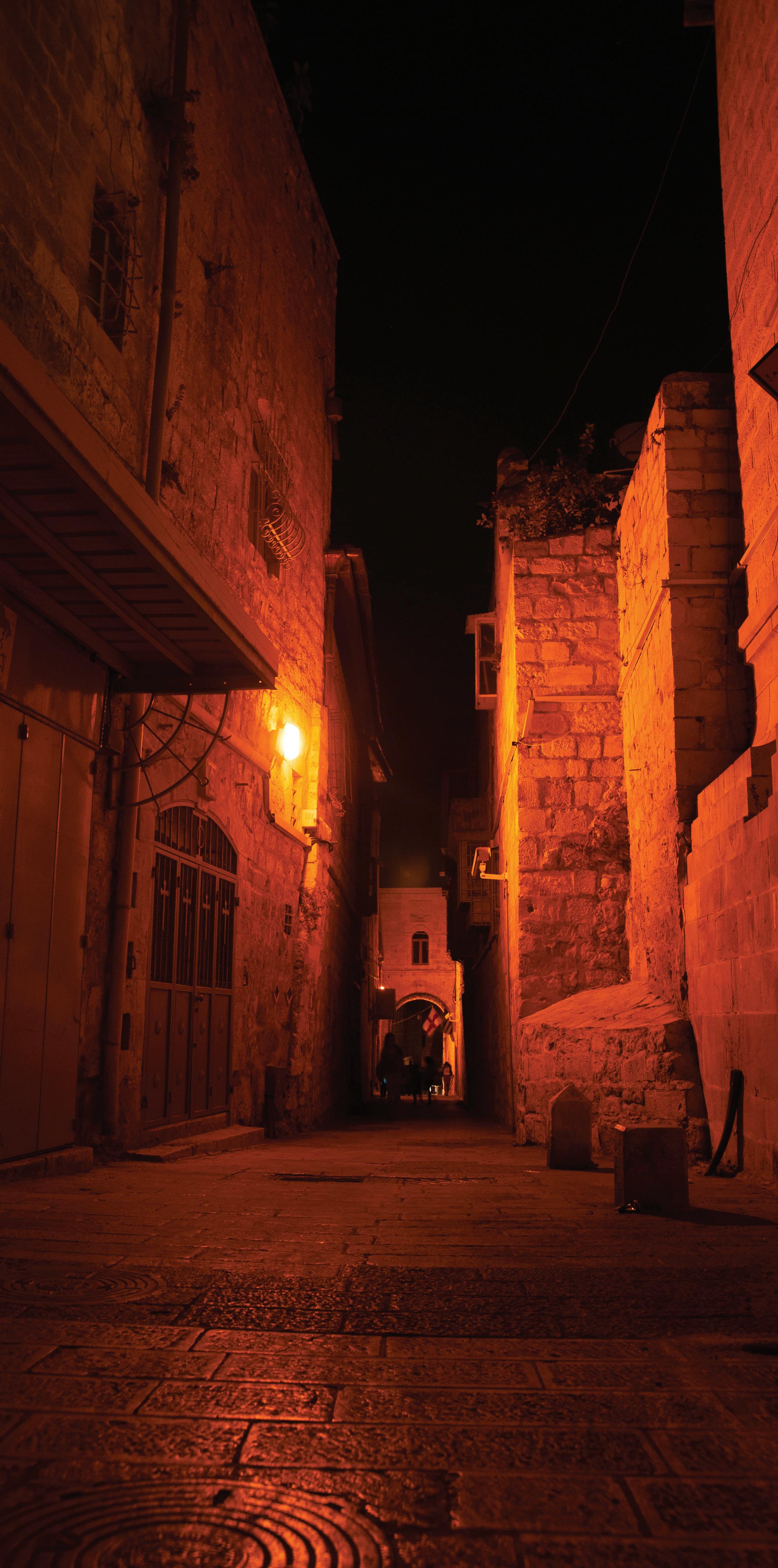


above the minarets and spires, the domes and towers running like the banners of a great army beneath the expanse of heaven. Thousands of years attend his footfalls. He holds the millennium in his hands.
The monks will be waiting for him. For more than 850 years, his descendants have walked this way, day after day, carrying the same iron to the same purpose. He walks toward the Church of the Holy Sepulcher, the heart of Christendom. At the southern façade there, beside the stone pillar where knights and pilgrims carved marks to memorialize their journey, a member of the Nuseibah family will be waiting. He will hand over the key – a fivehundred-year-old piece of iron, about a foot
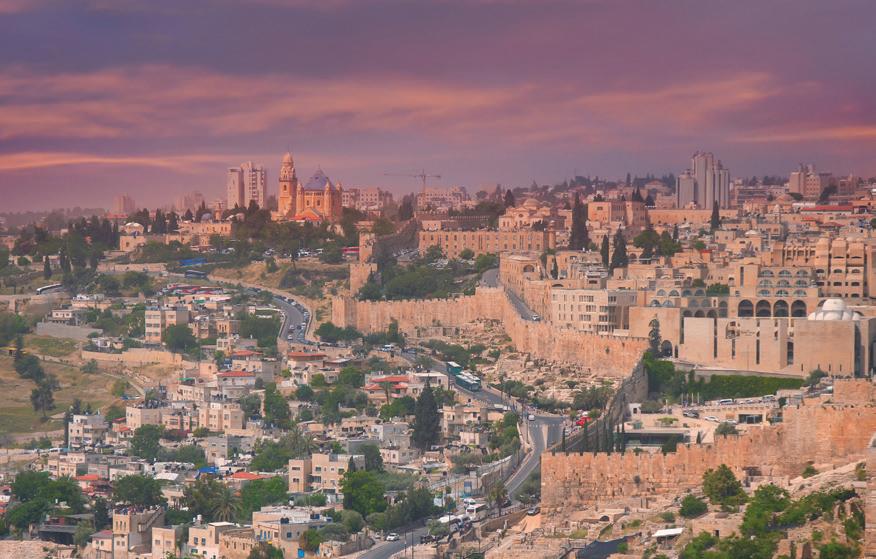



long, with a triangular handle and a square bit (like the joining of heaven and earth). The other man will take the key and open the doors to the church before returning the key to his custody.
For more than 850 years, this ritual has been uninterrupted. The Old City streets have changed, yet somehow, in the frailty of flesh and blood, perpetuity arises like a resplendent vision more enduring than stone. Avenues of his ancestors line the streets. Arches of generations hold constant beneath the turning of the stars.
He cannot be late. The early morning formalities require no words. He hands the key to the other man, who nods in the silence. The man knocks against the old wooden doors, doors almost as old as the Christian religion,
hung on hinges in stone hewn by the Crusaders. A small hatch opens about knee-height, and the feet of a short wooden ladder appear. The man takes the ladder, wheedles it through the opening with a practiced motion, and leans it gently against the left of the double doors. Then he mounts the ladder to remove the first large iron lock, threading the large key downwards to release the ancient mechanism. It comes away easily – the centuries worn into its working by the river of time. Then he descends and does likewise with the lower lock. The ladder is passed back into the hatch, and then the door is opened.
The Church of the Holy Sepulcher is open for worship. (The church is known as the
Church of the Resurrection, or the Martyrion in the Orthodox church.)
Each morning has been like this since 1192 (except for Holy Week, where the key is temporarily loaned to some of the Christian denominations in use of the church). Saladin (Salal ad-Din Yusuf ibn Ayyub, the “defender of the faith”) (c. 1137 – 1193) took Jerusalem for the Crescent in 1187, after the rout of the Crusaders at Hattin. A sagacious ruler, he allowed Christian and Jewish communities to thrive in Jerusalem. Within five years of his conquest, Saladin entered agreement with Richard the Lionheart to allow Christian pilgrims to reenter the Holy city, subject to certain conditions. And come they did.




Even then, the Church of the Holy Sepulcher was contested between Christian sects. Everyone wanted access to this most holy site –the purported site of Christ’s death on the cross – Golgotha itself – and, under the same roof, the stone of the unction and the tomb whence Christ’s resurrection was miraculously wrought. It was here that many believe Christ’s blood ran down the cross, into the clods of earth, to wash over Adam’s skull and cleanse away forever the stain of original sin. As above, so below.
With the sagacity for which he remains famous, Saladin elected to give the keys to the church to a Muslim neutral, the noble Shaikh Ganim ben Ali ben Hussein al-Ansari al-Khazrajy. To ensure peace, Saladin decreed that he and his descendants would henceforth be the keepers of the keys; to them alone would the implements be entrusted. To maintain balance, Saladin decreed that another Muslim family, the Nuseibeh family, were to have custody of the entryway; that is, the agency of opening and closing the doors. Then there could be no disputing to whom the church belonged: the Church of the Holy Sepulcher belonged to all Christians. No claim could be held above another in representation of control of access. In testimony to Saladin’s wisdom, this arrangement still holds true today.
Cyril, in 348. According to his telling, Helen, having razed the pagan temples, was undertaking excavations in Jerusalem in search of the cross when she was led by a man called Judas (interestingly enough) to the place where the True Cross had been hidden by the authorities. One telling of the legend recounts the inscription, Iesus Nazarenus Rex Iudaeorum was still attached, so the True Cross was readily identifiable. In another telling, however, Helen and Macarius, bishop of Jerusalem, devised a test to discern which was the True Cross and which belonged to the thieves crucified beside Jesus. In one account, the three crosses were taken to a moribund woman: upon touching the True Cross, she was restored to health. In another account, a corpse was brought to the three crosses. When the dead body was lain upon
“It was here that many believe Christ’s blood ran down the cross, into the clods of earth, to wash over Adam’s skull and cleanse away forever the stain of original sin. As above, so below.”
the True Cross, it was restored to life!
Over the centuries, an implied agreement has forged a mosaic of interests vested between the Christian sects. This ownership – which is complex – is termed simply the “status quo.” The way things are; the way they should stay.
“Our family has been carrying the keys of the church since the era of Salah ad-Din,” Adeeb Joudeh says on his website. “We have been doing this in accordance with hundreds of Faramans (Royal Decrees) issued by the successive sultans who ruled Jerusalem. We are proud to be the custodians of the keys and we are keen on guarding and maintaining the Holy Church. The history of the Christians and Muslims in Jerusalem is filled with many examples of brotherhood and respect for all religions,” he says.
The Joudeh family owns two sets of keys. One (which is now broken) was fashioned at least 850 years ago. The newer one (the one still in use) is about 500 years old.
The Church of the Holy Sepulcher was founded in A.D. 333 after Saint Helen, mother of Constantine, came to Jerusalem in search of relics of her newly adopted religion. The discovery of the site of Christ’s crucifixion, the True Cross, and His tomb, were recorded by Saint
Helen discovered a Jewish tomb under the temple to Venus (erected by Hadrian around 135 AD) and, not far away, a rock which, according to local custom, was the site of Jesus’ crucifixion. Construction of churches was immediately commenced. After about two years of construction, the Church of the Holy Sepulcher was dedicated on September 13 and 14, 335.
The church was first burned down in 614 by the Persians. After negotiations by Heraclius, emperor of Byzantium, the church was restored by the abbot of the monastery of Theodosius, Modestus. The church was again destroyed in 1009, by al-Hakim bi-Amr Allah (985-c.1021), the sixth ruler of the Egyptian Shi’i Fatimid dynasty, and was again rebuilt by Constantine IX Monomachus (c. 980-1055), the Byzantine Emperor.
The liberation of the Holy Sepulcher was among the chief motivations for the First Crusade (1096-1099). In the twelfth century, the Crusaders undertook general restoration of the church. It was reconsecrated on July 15, 1149. Due to ongoing repairs throughout the centuries, according to the Encyclopedia Britannica, much of the present church dates to 1810. But its form and many substantial portions remain much as constructed by the Crusaders and, in some areas, even earlier.
The holy site was first preserved for Christians in 638, after the capitulation of Jerusalem
to Caliph Umar ibn Al-Khattab, Muhammad’s father-in-law, the second Rashidun caliph, who succeeded Abu Bakr (also Muhammad’s fatherin-law) by direct appointment. Umar first opposed Islam, but after his conversion in 616, he was the first Muslim to openly pray at Kaaba. The siege of the holy city had been well executed by general Abn Ubayda Ibn al-Jarrah. Al-Jarrah offered three options to the inhabitants: surrender and convert to Islam; surrender and maintain separate faiths but pay tax as non-believers; receive no quarter and observe the destruction of the city with its holiest sites razed to the ground. Sophronius, Patriarch of Jerusalem, agreed to surrender Jerusalem, but only to the Caliph himself. The Caliph was in Syria but honored the request and came to Jerusalem by camel. They met at the Mount of Olives and Sophronius signed the capitulation of Jerusalem in February, 638.
According to Eutychius, writing about three hundred years after the signing, Umar entered Jerusalem with an entourage and sat at the atrium of the Church of the Resurrection (the Holy Sepulcher).
“I want to pray,” he said to Sophronius. “Commander of the Faithful,” Sophrionius answered, “pray in the place where you are now.” But Umar declined. Sophronius then led him into the church where he spread a straw mat onto the floor for Umar to make his devotions. But Umar again declined. Then, Umar went out the eastern steps and prayed alone on the steps.
“Patriarch,” he said later to Sophronius, “do you know why I did not pray inside the church?” Sophronius said he did not. “If I had prayed inside the Church,” Umar explained, “you would be losing it and it would have gone from your hands because after my death the Muslims would seize it saying: ‘Umar has prayed here.’”
Umar then asked for parchment to write. Eutychius tells us that Umar made a decree that “the Muslims should not pray on the steps as a congregation, but only individually, and that they should not gather [at the church] for the purpose of [communal] prayer,” thereby securing the church to Christian hands. This document has been widely upheld – aside from destruction of the church in battle, a mosque has never been built on the site. True to Umar’s cautionary words, however, a mosque does exist to the east of the church, close to where he prayed. As a result, the entrance of the church was moved to the south.
Demolished in the fourth century to construct the edifice
Inhumation Chamber
Present day church Golgotha, the place of a skull
Above: The Church of the Holy Sepulcher was built as two churches which ultimately merged into one. One church was built over the rock of Calvary, Golgotha. Then the other was built over the tomb nearby. The original entrance brought pilgrims from Golgotha, in an open a garden, through a narthex and basilica to the tomb. The entrance was moved to the south after a mosque was built at the east entrance.
Today the Church of the Holy Sepulcher is shared between six Christian denominations, each having specific areas within the church belonging to them. Under the so-called status quo, the majority is owned by the Greek Orthodox church, who manage the Katholikon, the North Transept, the Seven Arches of the Virgin, a small Orthodox Monastery, the Chapel of St. James the Less, the Chapel of St. John, and the Chapel of the Forty Martyrs.
The Roman Catholics have the Franciscan Monastery on the north side (which includes the Chapel of the Apparition and the Chapel of Mary Magdalene), the Grotto of the Invention of the Cross at the east of the Chapel of St. Helena, a small area north of the Parvis, and a tiny alcove between the Katholikon and the Rotunda.
The Armenians manage the Chapel of St. Helena, the Chapel of St. James, and the Armenian Gallery off the Rotunda.
The Copts have a few recessed chapels off the Rotunda, and one near the Parvis by the Stone of Unction, as well as a small portion in
the Holy Sepulcher itself.
The Ethiopian monastery is atop the roof, in an area called Deir al-Sultan, but the Ethiopian church also manages the Chapel of the Four Living Creatures and the Chapel of St. Michael.
The Syriac church has one small chapel off the Rotunda of the Holy Sepulcher.
Finaly, the Parvis and Rotunda in the Holy Sepulcher are commonly owned between the Greek Orthodox, Roman Catholic, and Armenian churches.
This multifaceted ownership is complicated, and reinforced by tradition. In 1927, an earthquake damaged the church considerably. But the repairs were not effectuated until 1959, thirty-two years later, because the Orthodox, Catholic, and Armenians could not agree on the manner of the repairs.
The status quo is scrupulously observed. It hasn’t always been peaceful. For example, the Copts have a longstanding claim over a part of the roof, where the Deir al-Sultan monastery is occupied by Ethiopian monks. To maintain

Armenians
Copts
Ethiopians
Syrians (Jacobites)
Common property of Greeks, Latins and Armenians
Above: Schematic of “status quo,” showing the portions of the church under the control of each of six Christian sects. The Parvis and Rotunda are held in common by the Greek Orthodox, Catholic, and Armenian churches. Below: Crosses carved by pilgrims into the wall at the Chapel of St. Helena, Crusader era.

their claim, Coptic monks take turns sitting on a chair on the roof. On a particularly hot day in 2002, when a Coptic monk moved the chair a few inches into the shade, the move was seen as an attempted land grab. Eleven monks ended up in the hospital.
The dispute over Deir al-Sultan has been ongoing since 1970, after Ethiopian monks changed the locks to the monastery atop the church while the Copts were attending service on Bright Saturday, the eve of Easter.
More recently, in 2008, a brawl erupted between Greek Orthodox and Armenian monks during a procession for the annual Feast of the Cross. The Greeks had protested the procession, demanding it not commence until the Greek Orthodox could participate in their own observance. The Armenians persisted; it was their time to use the Katholikon. A melee ensued. “The Greeks have tried so many times to put their monk inside the tomb, but they don’t have the right to when the Armenians are celebrating the feast,” an Armenian clergyman told the BBC after the event.
“We protested peacefully, we stood here in the middle and we claimed that we shall not leave the procession finished unless they leave our guardian be inside,” a Greek clergyman said. The unfortunate event was captured by worshippers and posted online.
Perhaps the most poignant symbol of the status quo is the so-called “immovable ladder.” No one knows precisely when the ladder appeared above the cornice owned by the Greek Orthodox church and leaning against the windows owned by the Armenian Church, but it has been there for almost three-hundred years. It is depicted in an engraving by the Franciscan monk, Elzear Horn, from 1728, nineteen years before the official firman (decree) by Abdul Hamid I, the Ottoman Sultan, who originated the status quo in 1757, requiring by royal decree that everything to be left as it was. The ladder is expressly subject to the decree. As such, it has become symbolic of the tight lines of ownership at this most holy site.
The reason for the ladder is not entirely known. One possibility is that it was used by


the Armenians to access the ledge under the window during Ottoman rule because the kaffar – a tax levied upon clergy anytime they entered the church – effectively forced the monks to remain inside. This way, they were able to get some sunlight and participate in ceremony in the courtyard without ever leaving the church. Pictures from the nineteenth century show potted plants upon the cornice, so the ladder may have been used to tend plants and vegetables planted there.
But the ladder doesn’t just span the centuries. It touches the cornice (subject to Greek Orthodox control) and the window (Armenian). It therefore spans a theological divide.
In 1964, Pope Paul VI issued a pontifical order that the ladder should remain in place until the Catholic and Orthodox churches ecumenize, or until Christ returns . . . whichever is sooner. KT

The immovable ladder is shown above the brickedup doorway (left page) - which was bricked up by the Muslims in 1187 – on the south entrance to the Parvis of the Church of the Holy Sepulcher. The ladder is also shown in an engraving from 1728 (top) by the Franciscan Monk, Elzear Horn. It is visible in the photo (left) from the 1880s.

by B. Chris Ruli

For more than two centuries, American Freemasons have traveled to Mount Vernon, Virginia, to pay their respects to the first President of the United States, fellow Mason George Washington.
These pilgrimages were occasionally arranged by Knights Templar from the District of Columbia who chartered steamboats to trundle visiting commanderies up and down the Potomac River for fraternal activities.
"While trips to Mount Vernon by Freemasons were not uncommon, the decision to perform the sacrament of baptism during a Templar program at Washington’s tomb is certainly unusual."

Trips to Mount Vernon became more frequent after the Civil War, when new technology and advancements in railways enabled Americans to travel faster, cheaper, and safer than ever before. While examining the records of Columbia Commandery No. 2 in Washington, D.C. recently, a peculiar pilgrimage to Mount Vernon on Saint John the Baptist’s Day in June 1866 came to light. It began with several speeches and concluded with a baptism at Washington’s tomb.
While trips to Mount Vernon by Freemasons were not uncommon, the decision to perform the sacrament of baptism during a Templar program at Washington’s tomb is certainly unusual. Viewed through the lens of history, this pilgrimage helps us better understand how our predecessors viewed George Washington, faith generally, and chivalric Masonry's role in society.
The trip began at 7:00 o’clock on the morning of June 24, 1866. Knights from the District of Columbia’s then two commanderies, Washington No. 1 and Columbia No. 2, as well as their families, assembled at the Templar asylum located in the District’s former Masonic Temple on 9th and F Streets, N.W. The President’s Marine Band accompanied the Sir
The Marine Band was often called upon by the local commanderies to participate in similar parades and cornerstone ceremonies. Participants departed the hall, and the knights formed a public parade enroute to the 7th Street Wharf. They arrived and boarded the steamboats Wawassett and Winnisimmet, which descended the Potomac River into Virginia and eventually arrived at the Mount Vernon dock. Washington reporters joined the excursion and recounted their activity in detail for local papers. “By 9 o’clock,” one reporter noted, “the two boats were well crowded, between 800 and 900 persons.”
On reaching Mount Vernon the party disembarked, when [the two commanders] formed the Sir Knights in column, who headed by the Marine band, led the party to the tomb containing the remains of the immortal Washington. The party then paid an informal visit to the Mansion Home, where the most of them registered their names in a book kept for the purpose, and critically examined various pieces of furniture, relics of General Washington’s household effects, visited the
garden, and other points of interest on the premises, until they were called together by the sound of the bugle [back to Washington’s tomb].
Their program began with a rendition of “Linda Schimele” by the Marine Band and then a prayer offered by the Reverend J. N. Combs, Grand Chaplain of the Grand Lodge of the District of Columbia. “Washington’s Grave” was next performed by a Masonic quartet and the “Dead March” from Nabucco by the Marine Band.
Benjamin B. French, a Past Grand Master of the District of Columbia and Past Grand Master of Knights Templar of the United States of America, was then introduced for brief remarks. He noted that “this was his fifth time that he had [sic] came with Masons to pay homage at this shrine and [sic] expressing a hope that the custom would be annually continued.”
French became Grand Master of Knights Templar in 1859 and served in the office for two terms, through the entirety of the American Civil War. Raised a Master Mason in New Hampshire, French moved to Washington in 1833 to begin his career as a clerk in the House

of Representatives. He rose through the ranks to become chief clerk for the House and was later appointed by Presidents Pierce, Lincoln, and Johnson to serve as Commissioner of Public Buildings during their administrations.
French then introduced his colleague, Congressman and Past Grand Master of Illinois Henry P. H. Bromwell. Unfortunately, Bromwell’s remarks were not recorded in the meeting ledgers and a copy could not be found in local newspapers or proceedings. Given his penchant for esoteric topics, however, he likely provided a lively address that reflected his interests.
“Just here,” one reporter noted, “was performed the most interesting part of the programme – a part which had not originally been in the order of exercises – the sacred rite of baptism.”
The four children belonged to knights attending the ceremony – Robert Baily, S. F. Crown, H. Riley, and John Briscoe. “We doubt not that when those little ones arrive at the age of maternity they will revert with unusual pride to the time when, on St. John’s day, in 1866, they received the holy rite of baptism at the hands of those who reverence the cross of Christ, in front of the tomb of Washington.” The Marine Band played “La Miserere” from Il
Trovatore to close the day’s festivities.
Knights and their families returned to the dock and proceeded further down the Potomac, landing at Glymont Pavilion on the Maryland coast where the group held a reception. “After spending a few hours in social intercourse, they returned to the city.”
Knights Templar returned to Mount Vernon regularly in the ensuing decades to visit Washington’s tomb, as Grand Master French had hoped. Thirty-seven years later, in 1903, Columbia Commandery elected Harry F. Riley, one of the four children baptized that day in June 1866, to serve as Commander – connecting his election back to this unique moment in Templar history.
The 1866 program may have been the earliest – perhaps the first – masonic program to include a baptism at Washington’s Tomb. This event gives us a better understanding of how knights viewed Chivalric Masonry’s role in society and how faith tied closely to the myth of George Washington. In performing this sacrament near his tomb, the knights leaned on Washington’s own experiences and values to serve as a good role model for others. Like Washington, a valiant Sir Knight should lead their life in the service to their country, family,
and be grounded by faith.
The June 1866 program shows how early Knights Templar attempted to emulate Washington’s principles in action. KT
“June 25, 1866,” Records of Columbia Commandery No. 2 (Washington, Columbia Commandery).
Charles E. Baldwin, History of Columbia Commandery No. 2, Knights Templar, 1863- 1963 (Washington, 1963), 33-35.
“Masonic Celebration of St. John’s,” Washington Chronicle, June 26, 1866.
“Masonic Celebration,” Daily National Intelligencer, June 26, 1866.
B. Chris Ruli, The White House & The Freemasons (Richmond, Macoy Publishing, 2023).
Images courtesy of the George Washington Presidential Library at Mount Vernon.





A faithful reproduction of the handwritten manuscript of the Orders of the Temple made by George Connor in 1882, a decade before the Orders were standardized across the Grand Encampment. Connor was a PGC and PGM of Tennessee. His skill and effort in recording the Orders are of historical relevance, but also constitute a valuable work of art. This book records the way the Orders were conferred chronologically, with the Order of Malta conferred last. Includes commentary and comparisons with the current ritual by S.K. George Marshall, KGT, PGC. Original manuscript is in the archives of Lookout Commandery No. 14 in Chattanooga, TN. All proceeds benefit the Knight Templar Eye Foundation. Order online at:
https://www.ktef.org/items/a-templar-monitor
by David Dryer

There are essentially three basic, fundamental rudiments of success for the future of our Order. These three elements complement and supplement each other. They fit together like a strong hand in a well-fitting glove. They should be viewed together – not separately or individually.
First is membership! It must be prioritized. The Grand Encampment’s Membership Committee has operated during the 68th and 69th Triennial periods under the concept that setting a goal without a plan is nothing but a wish. As such, each year the elected leaders of the Grand Commanderies have been called upon to address goals, aims, targets, and objectives – plans of action, schemes, and strategies.
Let’s review how the Grand Encampment has performed in terms of membership. The percentage of change in membership for Grand Encampment over the last five Trienniums (that
65th Triennium: -13.17%
66th Triennium: -13.41%
67th Triennium: -14.34%
68th Triennium (The year of the covid virus): -16.01%
69th Triennium: -7.60%
is, fifteen years), from the 65th Triennium to the present day. The Grand Encampment has lost members every year. However, look at to the percentage of loss:
This Triennial – the 69th – the Grand Encampment is going the right direction.
If you review Grand Encampment’s Masonic Membership Solutions (MMS), there are sixty-three reporting jurisdictions. That means fifty Commonwealths, States, and
the District of Columbia – ten nation states –and three Subordinate Regions. Of those sixtythree reporting, forty-three gained members, remained the same, or had single digit percentage of loss.
Twenty jurisdictions suffered double digit losses during the 69th Triennium. To the leadership of these jurisdictions, as we used to say in the Army, “you need a sense of urgency!” Take to heart the wise adage: Adhere to your purpose. If you falter and give up, our banner
will fall. Stick to your purpose! Templary is important – perhaps now more than ever. We need you.
To the leadership of the other fortythree Grand Commanderies and Subordinate Commanderies, and to the leaders of every Constituent Commandery, take a fresh look at your goals and actions, evaluate what you have been doing, adjust, and look forward. The baton has passed from Grand Encampment Membership Committee Chairman William Garrard to a new Mr. Chairman, Sir Knight George Edmiston, at the start of the 70th Triennium. New guidance will come from the Grand Master through this committee soon and will be addressed in detail at the Department Conferences. Make sure you attend and implement your membership plans.
There is one certainty – one absolute, bedrock reality that never changes. This is the second requirement for success – leadership!
The U.S. Army used to display a poster prominently, for all recruits. It read:
The Army needs more men who do not have a price at which they can be bought; who do not borrow from integrity to pay for expediency; whose handshake is an iron clad contract; who are not afraid of risk; who have opinions instead of prejudices; who are as honest in small matters as they are in large ones; whose ambitions are big enough to include others; who know how to win with grace and lose with dignity; who do not believe that shrewdness and cunning and ruthlessness are the keys to success; who are not afraid to go against the grain of popular opinion and who do not believe in “consensus”; who are occasionally wrong and always willing to admit it. In short, the Army needs LEADERS.
Leadership is everything!
Let’s review a salient example of leadership. The office of the President of the United States, and one President in particular, whose actions provide a worthy example of leading in difficult times. Consider, there have been fortyfive different men who have held the office of President of the United States. All have been well documented. But one has had more books written about him than any other. Do you know which one has had the most books written about him? Abraham Lincoln. More than 15,000 books have been written about him.
Abraham Lincoln was a leader! He was not perfect. He did things that have been disparaged and criticized. He did things to get the job done and accepted responsibility for those actions.
What were some of the attributes that he personified during his fifty-six years of life?
He served four terms in the Illinois General Assembly where his signature issue was government funding of internal improvements. When a hard, long fiscal recession set in, there was no way the legislature could continue to fund such projects. He chose not to run for a fifth term because he knew that he would not be able to deliver. He said, “The chief gem of my character is my ability to keep my word.”
When he became President, he did not want a war. In his Inaugural address he said, “In your hands, my dissatisfied fellow countrymen, and not in mine, is the momentous issue of civil war. The government will not assail you. You can have no conflict, without being yourselves the aggressors. You have no oath registered in Heaven to destroy the government, while I shall have the most solemn one to ‘preserve, protect, and defend’ it.”
In July 1861, he pressured the commander in the field to attack near the city of Manassas, Virginia, by a tributary called Bull Run. The troops were under-trained and ill-prepared, and the result was a humiliating defeat. He gave the order – he assumed the blame. Lincoln held the view that to grow, you must be able to acknowledge your mistakes. After that set back, he left the Executive Mansion and went to field for the first of many trips to meet with soldiers. Enlistments were about to expire. He told them that the “country” needs you and, “I” need you. He urged them to re-enlist. There were times during the war that he went to the front and was exposed to enemy fire.
Seventy percent of the soldiers voted for him in the 1864 election.
In 1863, after the Emancipation Proclamation, the Union Army began to recruit black soldiers. In the Confederacy, this was viewed as encouraging insurrection. Accordingly, Confederate President Jefferson Davis issued an order that Blacks captured in Union uniforms were to be executed or enslaved. Lincoln then issued a retaliatory order – for every executed Black soldier, a captured Confederate soldier would also be executed. That was certainly dramatic and worthy of attention. The trouble was, he never enforced his retaliatory order. When challenged about being, “All blow and no go,” his answer was simple. “If I could find the rebel soldiers responsible for acting out the orders of Jeff Davis, I could execute them. But to kill just any captured rebel? You must agree that there is a difference between stating a principle and putting it into practice!”
He made frequent use of the presidential power of pardon for soldiers scheduled to be executed for running away from battle and for falling asleep on picket duty. This gave relief to the soldier’s family and provided the soldier a
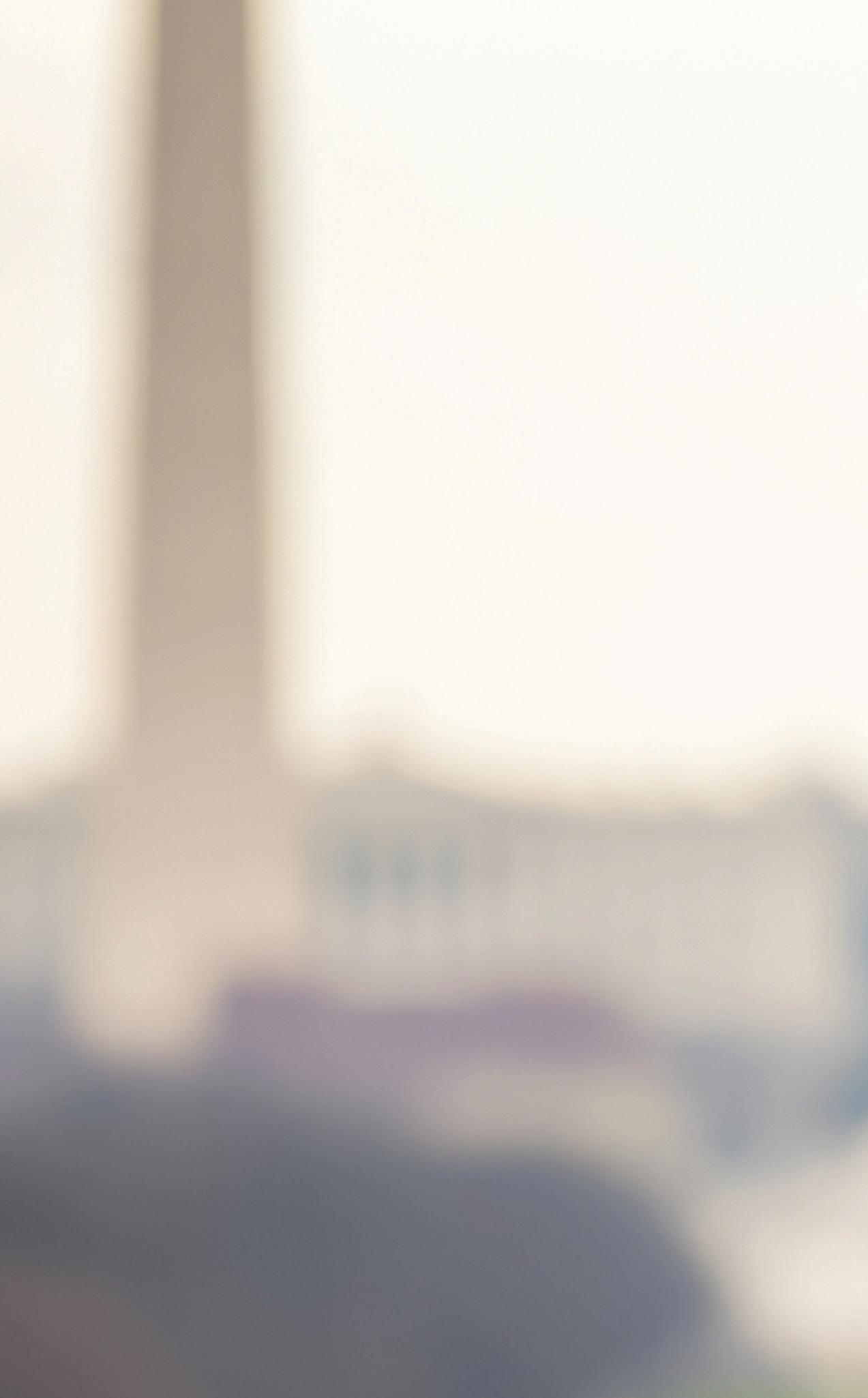
second chance to go back to the line, serve the cause, and get his self-respect back.
In the summer of 1864, casualties were extremely high and the chances of re-election for President Lincoln were looking slim. The president was approached with a proposal designed to turn public opinion around. Here was the exchange:
“Propose these steps to the Southern Leaders, 1) End the war – stop fighting now; 2) Restore the Union; 3) Resolve the key issues like slavery later.”
Lincoln responded, “No! Davis will not budge on the issue of independence for the South. We both know that.”
“Yes, we know that, but the people don’t. If we force Davis’s hand and make him say no, they will view the Southerners as obstinate and will hold them to blame.”
“If I turn my back on the Black soldiers now, I will be damned in time and eternity. I understand the political merits of your approach, but I will keep my word come what will.”
These are but a handful of many stories about Lincoln. But the principles, tenets, values, and virtues espoused in this great Order, that we revere and should be honored to serve, are clearly evinced in these examples. When you look at the life of President Lincoln you certainly see honor, integrity, truth, morals,

ethics, high standards, commitment, and fidelity. Doing what is right to uphold these tenets and virtues is all that is necessary to lead well. Do what is right, come what may.
Finally, the third key to success for our Order – ritual!
Dedicated minds have delved into the ancient legends, majestic symbols, and hidden mysteries of numerous cultures through the years. The fruits of this research have been reduced to the wisdom, enlightenment, insight, and pageantry of the Masonic Degrees and Orders of the Temple.
When asked to identify his priorities for the 70th Triennium besides membership and leadership, Grand Master Kussman said, “Ritual.” He spoke about its moral and ethical lessons for life and about facing our challenges in the future. He stressed that ritual could guide us toward the practical application of our Christian origins.
The ritual needs to be committed to memory. The ritual and floor work need to be recited and performed in a professional manner. The lessons and teachings that arise from the ritual need to be vibrant: a living and breathing part of your thoughts, words, and actions. Daily.
There is another story about President Abraham Lincoln worth mentioning here. The President met with Grant and Sherman in City
Point, Virginia on March 27, 1865, to plot the last stages of the war. This is what he told his field commanders.
“When this war is over, I want peace.” He said. “I have no interest in retaliation or retribution. The rebels will be returned home unharmed. Let them have their horses to plow with and their guns to shoot crows with. I want no one punished.”
“What about the Confederate Officials, Mr. President?”
“Let them go into exile. I do not want trials or hangings. Enough lives have been sacrificed. We must extinguish our resentment if we expect harmony and union. Let ‘em up easy.”
Lincoln demonstrated qualities of empathy, sensitivity, and intelligence. He was not a religious man in the most traditional sense of the word, but he was deeply spiritual. He read the Bible and committed many passages to memory. A particular Gospel admonition that was a guiding principle by which he lived and governed was: “Bless them that curse you.”
What is that liturgy from the back-burner of memory?
“I entertain no enmity nor ill will against a soul on earth which I would not freely reconcile, should I find in him a corresponding disposition.”
Those words from the Order of the Temple should sound familiar to every Sir Knight. And
every Sir Knight should strive to live by them. Ours is an Order that venerates the Prince of Peace. And indeed, the New Testament reminds us, “I will come again,” (John); “So Christ, having been offered once to bear the sins of many, will appear a second time . . .” (Hebrews); and “I am coming soon.” (1 Peter and Revelation of John).
It should be obvious that if the Messiah were to return today – right now – right here, the principles, tenets, values, and virtues that we espouse in our ritual – Honor, Integrity, Truth, Morals, Ethics, High Standards, Commitment, and Fidelity – would be His weapons of choice when combatting our great enemies – superstition, prejudice, apathy, indifference, ignorance, injustice, intolerance, and bigotry.
Let each of us use the same armaments as we strive to bring good men into this Order.
Masonry is not just a cold and antiquated affair speaking in parables and allegories. No, Sir Knights. Masonic ritual contains vital lessons to be learned in preparation for the life you are going to live, the life you are going to lead, and the life that you are destined to pass through. It is more than a code of conduct; it is a calling. A way to life. KT
by Ben Williams



Swiss made, three position regulated Sellita SW200 movement. Sapphire crystal with concave integrated bezel. Stainless steel construction. Thirty-seven millimeter, Telford case with DLC coating is durable, yet elegant. High detail dial with high polished elements. Fine-point Masonic emblems mark the hours. Luminous hands and glow-in-the-dark emblem on crown. Sapphire crystal case back shows movement and reveals a faint skull and crossbones in the right light. Leather strap. Water resistant to 10 atmospheres. Retails at $969.
The new Memento Mori is a debut automatic wristwatch from MarkwellTM, a Mason owned and operated business, founded by Bros. John Liley and Allen Record, of Utah.
It’s a good-looking timepiece and deceptively strong (I have bashed mine a few times against metal and concrete without scratching or denting it). The case was designed by Liley to look good, but also to last. It’s a quality construction worthy of the square and compasses.
“I wanted an everyday watch that was built to the same quality standards of other watches that are higher end [and] much more expensive. This watch is built in the same price range as watches that cost, you know, three or four times more.” Liley said. “This is something you can strap on, put on your wrist [every] day and run out, and it’s going to last you the rest of your life, as long as you take care of it.”
“With the prototype watches we had made,” Record said, “we beat the hell out of them. And I can’t even scratch this one,” he said, gesturing with the watch.
The watch is an homage to the vintage timepieces of Masonry’s heyday, but with a modern lift. The dial is bigger, the movement automatic. It’s water resistant to ten atmospheres. The dial includes Masonic emblems with a modernized line but reminiscent of

Victorian etchings. And yet, unless you looked closely at the dial, you probably wouldn’t notice the Masonic symbolism outright. The result is discreet and tasteful, not garish like so much Masonic memorabilia. This watch has class.
Despite a career in finance, Liley has a long fascination with horology. He studied art at college, and brought his skills to bear to design the watch from the ground up.
“I started [designing] on a piece of paper and a pencil.” Liley said. “I wanted it to be wearable. I wanted it to be rugged. I wanted it to be Swiss, because of quality.” He said didn’t select components from readymade menus to assemble the time piece, as many other branded watch retailers do. “Everything was designed,” he said. The result is a unique, cohesive timepiece with an overarching look and feel that unites under the MarkwellTM brand. It’s certainly a collector's piece.
“You want to do your job right,” Lilely said, drawing inspiration from the Mark degree in the York Rite. “You want to make your mark in life . . . mark well
“And that’s where the name came from.”
The Memento Mori from MarkwellTM is available in stainless steel and gold finishes. It retails for $969. Get one of the first production online at markwellwatches.com. It's definitely worth the time. KT

by Ike baker

In the York Rite system of degrees, it is in the Order of Malta that the ritual work becomes explicitly Christian in nature.
Yet the preceding degrees are of importance to that trajectory, perhaps most significantly the Order of Saint Paul and the Mediterranean Pass. Fittingly, we find in Saint Paul a convert from the Old Testament faith whose zeal and passion for Christ and the Christian message spur him on as a missionary across the ancient Mediterranean.
The voyage of Saint Paul at first seems ill-fated, having been shipwrecked on the island of Melita (Malta), and then bit on the hand by a deadly poisonous snake. The natives even remark at the seemingly repeated attempts of some greater force to bring an end to the Saint’s life. Yet, defying the odds, he remains unharmed. And they imagine him to be a god.
The password and sign of the degree both refer to the divine providence which is granted to the faithful and the defenders of the faith. This brief ceremonial is considered a pass-degree for the entrance into chivalric Masonry – a prerequisite. We see these ideas of divine providence reiterated and reinforced on a larger scale in the succeeding degree, the Order of Malta. Along with the admonition to “suffer patiently for Christ,” the history of the Order is alluded to in the banners and history of chivalric lineage. Each period is allotted to a specific phase of Christ’s life, alluding to
that central tenet of Masonry, the hope of the immortality of the soul – Birth, Life, Death, Resurrection, and Ascension.
As Knights Templar, this providential idea is of great significance. The candidate for Templary is furthermore prepared in the preceding degree by such means as being physically struck, and admonished to be, “submissive to the greatest affront which may come to you
“Is the peace of the Lord with us? Can we in our hearts and minds submit to great affronts which come to us in His cause?”
us? Can we in our hearts and minds submit to great affronts which come to us in His cause? Are we willing now, as we previously claimed, to defend the Christian faith, which has as its primary commandments, to love God and our neighbor as ourselves?
A Knight carries his sword not merely in his hand but in his heart and wields it not for the sparing of his own hardship, but for the hardships of the undeserving, and the defenseless. As Knights Templar we rest assured that divine providence will deliver us from the ravages of wreckage. We fear not, whether smitten by glove or sword or bitten by deadly viper, to meet with whatever end the Great Architect has purposed us for.
in His cause, ever having the peace of the Lord with you.” All this is as significant now as it ever was for those who admit the Christian faith, but more especially for those of us who deign to create ourselves Knights Templar. To walk a Christian path is to walk humbly the path first trod by Christ himself, and his apostles, as well as the disciples and martyrs who came before us: all Christians who met hard fates.
In these changing and uncertain times, we should take stock as brethren of the Craft and as Christians. Is the peace of the Lord with
If we act in the faith of Saint Paul, which is the faith that grants us the privilege of service to the Order of the Temple, then come what may, we have the assurance that Christian virtues will through us prevail, and we remain justified in greeting one another, “Immanuel” – God with us. KT
After eight months of visitations across the United States, members, friends, and family, in Canton, Ohio, recognized and celebrated the Supreme Worthy President’s Homecoming on June 7 through 9.
1. Supreme Worthy President, Ms. Tara B. Shulas, joined Sir Knights and Ladies in celebrating her return to Ohio in front of the NFL Hall of Fame.
2. Past Supreme Worthy President, Mrs. John A Brogan, celebrates her win at “Pass the Pig,” one of many games played during the weekend.
3. Social Order of the Beauceant members attend the Saturday evening banquet at Hartville Kitchen Restaurant.
4. Several ladies enjoyed a trip to the First Ladies’ Museum.
5. Sir Knight John Shulas, father of the Supreme Worthy President.
6. Supreme Worthy President Ms. Shulas displays some of the gifts lovingly given to her during her inspection tour.
7. Mrs. James Baughman learns a new game!
8. Supreme Worthy President Ms. Shulas and her family.
9. Supreme Worthy President Ms. Shulas was presented a quilt from the members of East Liverpool No. 71 Assembly by Recorder, (Mrs. Joacim) Colleen Van Leewen.
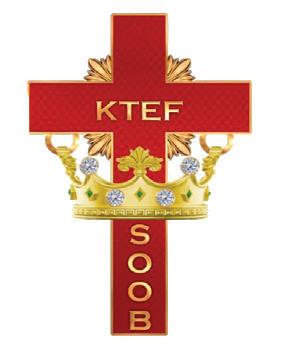
THANK YOU FOR GIVING
(Mrs. John A.) Mary Brogan, San Antonio No. 159; (Mrs. John) Ruth Habel, Carnegie No. 80; Ms. Wera Worthan, Waco No. 199; Ms. Vera Salley, Waco No. 199; Ms. Jennifer L. Smith, Las Vegas No. 207; (Mrs. Carl W.) Yvonne Wunsche, Melrose No. 204; Ms. Mary P. Sawilosky, Georgia State Assembly; Mrs. Carol A. Tomasic, Carnegie No. 80; (Mrs. L. Bruce) Peggy Austin, Kingsport No. 244; (Mrs. Larry) Pat Mick, Kingsport No. 244; (Mrs. Gary W.) Carolyn Coates, Kingsport No. 244; Ms. Lisa Leonard, Kingsport No. 244.
1.













The Supreme Assembly of the Social Order of Beauceant 2024-2025 Installation of Officers will be held in Tulsa, Oklahoma, on September 24, 2024. Supreme Worthy President-elect Mrs. (David) Wynn Evans will preside over the 104th Annual Supreme Assembly in Omaha, NE, in September 2025. The symbol she has chosen for this year is the Knights Templar Cross, surrounded by delicate petals of an oxeye daisy.
Mrs. Evans is proud that her paternal grandmother, mother, aunt, and daughter comprise four generations of members with Phoenix Assembly No. 213. Mrs. Evans is the Granddaughter of Roland V. “Doc” Watson, a Past Grand Commander for the state of Arizona. Her Husband, a former Marine, David Evans, is a Master Mason and member of Acacia Lodge No. 42 in Arizona. Wynn and David have a combined family of six kids and two grandchildren.
As a youth, Mrs. Evans participated in all three
youth groups: International Order of Rainbow for Girls, International Order of Jobs Daughters, and International Order of DeMolay as a State Sweetheart. As an adult, Mrs. Evan’s volunteered as a Boy Scout leader where she completed Wood Badge Leadership Training; Troop 91 Scouts and Leaders elected her to the Order of Arrow. Mrs. Evans has also received recognition as a Companion of the Temple by the Grand Encampment of Knights Templar.
During the 2024–2025-year, Mrs. Evans will be traveling to each assembly in the United States, encouraging continued support for the Knights Templar Eye Foundation. During her travels, she will look forward to collecting donations of “E” and “F” Dollars and promoting the certificate program where individuals giving donations will receive certificates for the following amounts: Faith ($25), Loyalty ($50), Love ($100), Cross and Crown brooch ($250). KT

I“The people living in darkness have seen a great light; and those living in the land of the shadow of death a light has dawned.” – Matthew 4:16 NIV
“In the beginning God created the heavens and the earth. Now the earth was formless and empty, darkness was over the surface of the deep, and the Spirit of God was hovering over the waters. And God said, “Let there be light,” and there was light.” – Genesis 1:3 NIV
n Freemasonry we are seeking light. We are searching for knowledge. We gain knowledge by experience, by study, by listening to the wisdom of others, and by research.
As Christian Freemasons we follow the teachings and example of our Savior, the Light of the World, the Son of God, Jesus Christ. We learn in Mark 10:46-52 and Luke 18:35-43 that Jesus healed the blind. Jesus brought with Him, Spiritual Light, but also physical light or sight to the people. The Knights Templar Eye Foundation’s purpose is to help researchers and doctors gain the light or knowledge enabling them to bring physical light to millions of people over countless generations to come. In addition to funding research, the Foundation participates in direct patient care through the Seniors Eye Care Program in partnership with EyeCare America and the Foundation of the American Academy of Ophthalmology.
Luke 11:34-35 (NIV) tells us, “Your eye is the lamp of your body. When your eyes are healthy, your whole body is full of light. But when they are unhealthy, your body also is full of darkness. See to it, then, that the light within you is not darkness.” As Knights Templar we spread the news of the Light of the World by the way we live our lives and by spreading the Gospels to anyone in need. We bring physical light by providing funding to improve vision through research, education, and supporting access to care.
Somewhere in the world, someone goes blind every five seconds.
I ask you to continue to support the Knights Templar Eye Foundation in its mission.
Bring the light to those that sit in darkness. Continue the miracles of Jesus Christ by contributing to the 57th Voluntary Campaign. During your next Christmas Observance, pass the plate to collect for the Foundation. Your dollars provide light.
I am humbled to be selected to serve as your chairman for the 57th Annual Voluntary Campaign for the Knights Templar Eye Foundation. Why Sir Knight David Kussman chose me for this I will never understand but I am very grateful to serve and will do my best. We are all in the debt of Sir Knight Paul Friend for serving in this position for the last two years. His dedication to service and our Lord is second to none. When you see him, shake his hand and express your appreciation. During the 56th Voluntary Campaign you contributed $1,616,534.30. When you add in the Trust and Wills donations the total comes to $8,360,466.32. That is a remarkable achievement (see pages 50 to 51 in this magazine for the results)! Congratulations Sir Knight Friend!
In the coming months I will list many of the rewards and honors you can earn by donating to the Voluntary Campaign. I will give you some ideas on how you might raise funds and support this worthy endeavor. I also direct your attention to the website (www.ktef.org) and the Facebook pages for the Foundation. On the website, look for the videos that will explain what great work you are performing with your donations. I urge you to watch at least three videos: https://vimeo.com/282337037, https://vimeo.com/221618160, and https://
vimeo.com/369816982. The first contains information about how important the Eye Foundation is to eye research. The next two show other ways your Foundation is helping bring light to those in need. You are making a difference. These three videos are all less than five minutes long. Watch them.
May the Lord continue to bless you and keep you.
In His and your service,

Richard R. Jernigan, PGC Chairman, 57th Annual Voluntary Campaign







Knights Templar Eye Foundation Scientific Advisory Committee Member
One of my most rewarding and greatest honors has been to serve on the Knights Templar Eye Foundation Scientific Advisory Board for the last decade. The career starter and competitive renewal grants have provided a necessary start for many leaders and scientists studying eye diseases affecting infants and children.
I am a vitreoretinal surgeon scientist leading pediatric retina at Stanford University, and my lab has made contributions in the current understanding of the pathophysiology of the pediatric retinal condition – retinopathy of prematurity.
When I started in pediatric retina twenty-five years ago, prior to working with the Knights Templar Eye Foundation Scientific Advisory Board, there was little known about the myriad conditions comprising pediatric retina. Knowledge was accruing with advances in genetics, imaging, molecular biology and science, so I brought together experts and created ways to develop and educate on pediatric retina conditions.
I developed a textbook and helped found the Advances in Pediatric Retina (APR) course to train new ophthalmologists and retina specialists learning pediatric retina and who are interested in presenting their own new research. This course has become one of the most attended courses and meetings worldwide to provide education and training in pediatric retinal diseases.
We have had four meetings of the APR, and I have come to realize from these meetings that many successful pediatric retina specialists across the country have had their early starts with support from Knights Templar Eye Foundation (KTEF) starter and competitive renewal grants.
At our first APR meeting in 2017, approximately 20% of the speaking faculty previously had KTEF grants, and many had developed their own laboratories, were department chairs, held strong leadership positions in ophthalmology, and received honors from their peers for their work.
“Thank you for all you do to reduce vision loss and blindness in infants and children with eye diseases, and for supporting our emerging scientists and leaders in pediatric eye disease.”

In addition to the impact KTEF has made on many careers through these grants, KTEF has also supported the KTEF Keynote speakers at our last three APR meetings.
Our most recent APR included over 200 attendees spanning five continents. Speakers in
the 2023 KTEF Keynote session were Machelle Pardue, PhD, Professor and Vice Chair of Research at Emory Eye Institute, who spoke on her research behind progressive myopia (a growing cause of vision loss worldwide); Antonio Capone Jr, MD, from Associated Retina Consultants, Royal Oak, MI, who spoke on the philosophy of treating children and infants with pediatric retina conditions (bringing to the forefront the complex conversations and teams needed to optimize care); and George Caputo, MD, the head of the department at the Adolphe de Rothschild Foundation Hospital in Paris France, who spoke on challenges in pediatric retinal surgery.
Supporting the KTEF Keynote series in the APR meeting is another important way that the KTEF impacts pediatric eye diseases and the career development of pediatric eye specialists and scientists.
I am grateful to KTEF. Thank you for all you do to reduce vision loss and blindness in infants and children with eye diseases, and for supporting our emerging scientists and leaders in pediatric eye disease.
I am pleased and proud to be an active member of the KTEF Scientific Advisory Committee. KT
CO Joseph D. Edwards
CO Daniel A. Rivers
FL Matthew S. Green
FL James M. Hafling
FL Richard E. Lynn
FL John D. Pickford
GA Kevin R. Deverell
IL Keith W. Cravens
MD William J. Baldwin Jr.
MA/RI Roger A. Benoit
MA/RI Robert B. Ellston
MA/RI Robert M. Hopkins
MA/RI David D. Lancaster
MA/RI Gerald A. Phaneuf
MA/RI Donald S. Stevens
MA/RI Thomas E. Stevens
MN Scott R. Boehning
MO James R. Fiete
NV Joseph R. Miller
NV James D. Phelps
NH William C.G. Solari Jr.
NJ Richard W. Westergaard
NY John W. Scott
OH Jerry D. Hays
OH Art Moore
OK John L. Logan
PA John W. Berry
PA Richard A. Reynolds
PA Joseph P. Tolen
PA Donald E. Zipp III
SD Herbert E. Cook
TN Dennis L. Stevenson
TX Robert C. Hays
TX Jimmy C. Payton
TX Jimmy R. Rumsey
TX Gregory R. Smith
UT Paul D. Erickson
UT Daniel L. Hamilton
VT Jon W. Hosford III
VA Raymond D. Steele
VA Bradley J. Watts
WI Richard J. Rausch
WI Charles E. White
WY Robert O. Finley
WY Kim L. Kurasz
AL John F. Bradshaw
AL Robert D. Legg
AL Wayne E. Sirmon
CA Armen Ulyan
CO Michael C. Foster
CO David C. Schweitzer
CT John A. Amarilios
FL Todd M. Connor
GA James G. Mashburn
IL Stephen T. Adamson
MD Vernon H. Huebschman
MN Brian K. Dimatteo
MN Roberto S. Gardiner
MN Eric J. Thiem
MN Gerald Zierdt
MO Michael S. Smith
MT Robert M. Hames
NV Thomas A. Collins
NY Anthony Limone
NC Robert E. Gresham Jr.
NC Hugh L. McLaurin III
NC James B. Steele
NC Steven A. Wilson
OH Robert J. Davis
OH Edwin D. Dickerson
OH Hewitt Harned
OH Arthur F. Koeniger
OH James K. Lawson
OH Kyle A. Markel
OK Robert L. Bradway
OR Richard G. Maris
PA Chet J. Barron
PA Charles E. Knapp Jr.
SC Christopher M. McDonald
TN Stanley W. Elder
TX Robert V. Barnes Jr.
VT Pierre N. Letourneau
VA Craig A. Cox
VA Joseph B. Hale
WA Bryan D. Bechler
WV Darren E. Eyler
JULY 2024
AZ John F. Herman
AR Michael P. Lockhart
CO Robert W. Gregory
DC Eloi P. Kpamegan
FL Louis N. Abreu III
FL Austin C. Drukker Jr.
FL Benjamin P. Minichino
FL Joseph A. Schoonover
MAY 2024
FL Paul W. Friend
FL James M. Hafling
FL John D. Pickford
MD William J. Baldwin Jr.
NJ Richard W. Westergaard
OH Timothy O. Ralston
OH Frank C. Sundquist
OK Robert L. Bradway
OK John L. Logan
PA Howard L. Smith
PA Donald E. Zipp III
TN Jesse J. Harper
TN Dickie W. Johnson
TX Larry S. Wall
UT Gary T. Roberts
WA James E. Nero
WI Richard J. Rausch
WY Robert O. Finley
WY Kim L. Kurasz
JUNE 2024
CA Lou L. Vizcocho Jr.
CT Mark S. Agnew
FL Todd M. Connor
FL James D. Snow
MN Douglas H. Brown Sr.
MN Brian K. Dimatteo
MN Roberto S. Gardiner
MN Eric J. Thiem
MN Gerald Zierdt
MO Michael S. Smith
NJ Charles M. DeWoody Jr.
NJ Alfred C. Laubsch Jr.
NC Robert E. Gresham Jr.
NC Hugh L. McLaurin III
OH James K. Lawson
PA Scott R. Hilsee
PA Adam C. Hyde
PA Orville R. Jones
SC Byron E. Honbarger
SC Christopher M. McDonald
TX Bruce R. Virgin
UT Paul D. Erickson
VT Pierre N. Letourneau
VA Craig A. Cox
VA Frederick R. Dixon Sr.
VA Joseph B. Hale
WI Pete Sterzinger
JULY 2024
AR Michael P. Lockhart
FL Austin C. Drukker Jr.
FL Benjamin P. Minichino
GA Wallace D. Mays
IL John E. Brayton
IL Enrique J. Unanue
IN James R. Ross
IA Monte L. Harris
IA Scott A. Schabacker
LA James W. Porter
ME Robert M. Wright
MD Charles Beckhardt
NH Arthur W. Stauff
NJ John D. Barnes
OH Douglas K. McIe
OH Ronald L. Vicars
OK Gerald K. Hornung
OK John L. Logan
PA Brenden R. Hunter
SC Verlon J. Hill
SD Jon Woods
TN Douglas E. Hawkins
TN Robert D. Hummel
TN James K. Price
TX Charles E. Campbell
TX Charles L. Steen
TX Franklin A. Zepp
VA Joseph Bonacci
VA Anthony C. Schienschang II
VA Peter R. Spring
VA Raymond D. Steele
WA Earl W. Fordham
WI Richard J. Rausch
FL Joseph A. Schoonover
GA Lemuel Harbuck Jr.
GA James G. Mashburn
IN Philip G. Hampton
IN James R. Ross
IA Keith A. Myhre
ME Robert M. Wright
MI David D. Hutton
NC Steven A. Wilson
OK Robert L. Bradway
PA J. Richard Eby
PA Michael A. McConaughey Jr.
WI Richard J. Rausch



